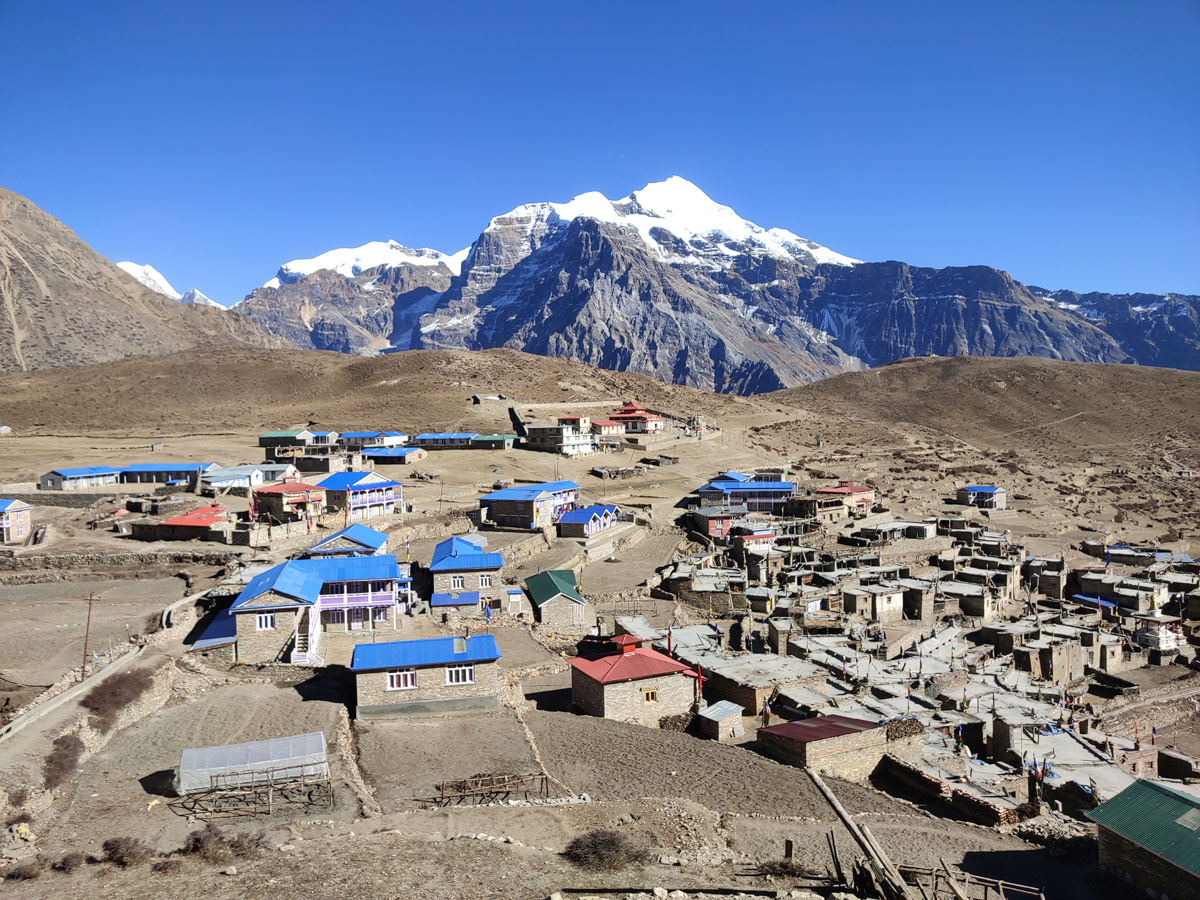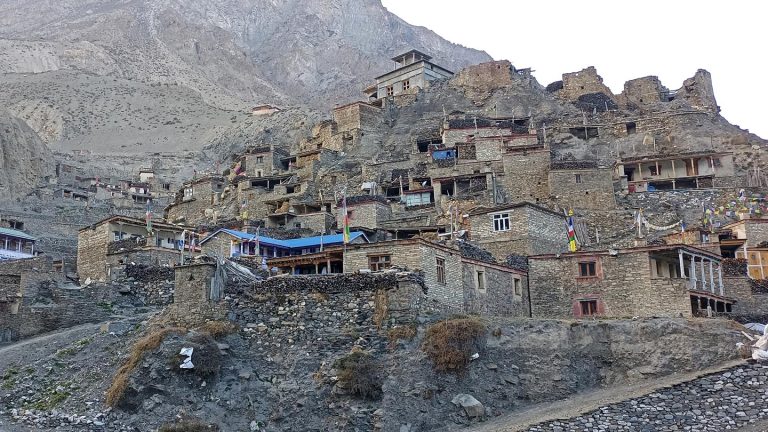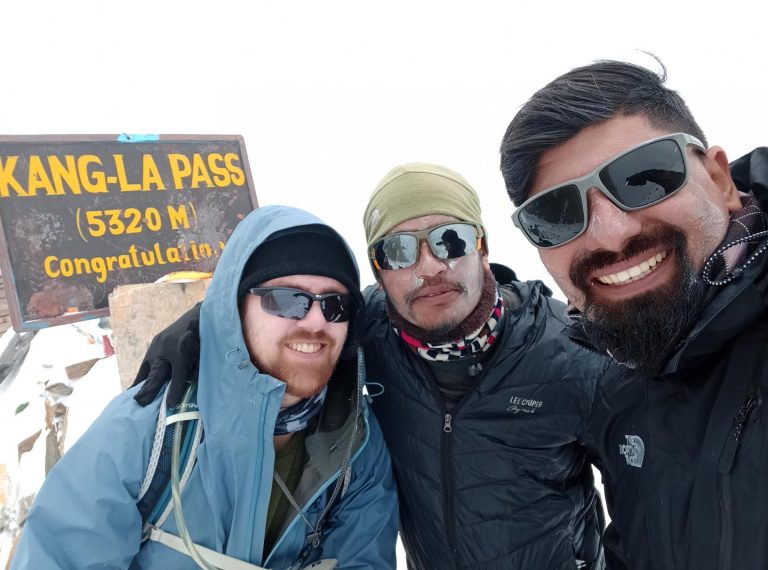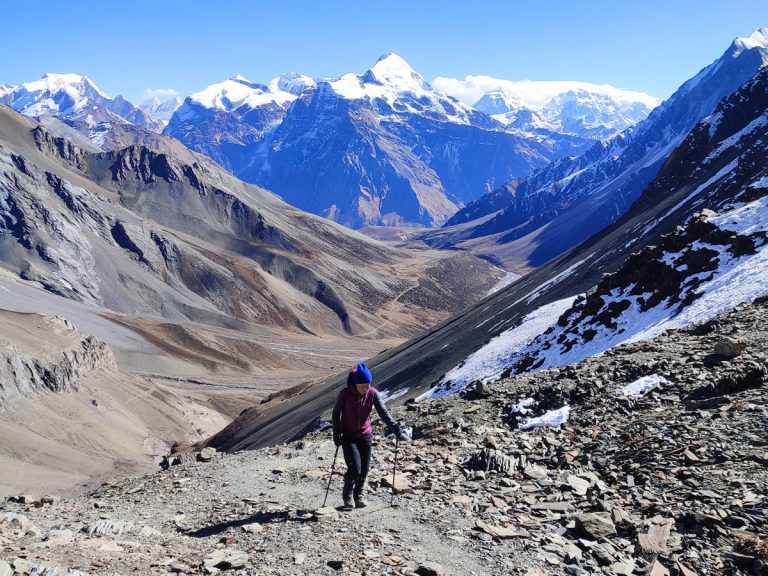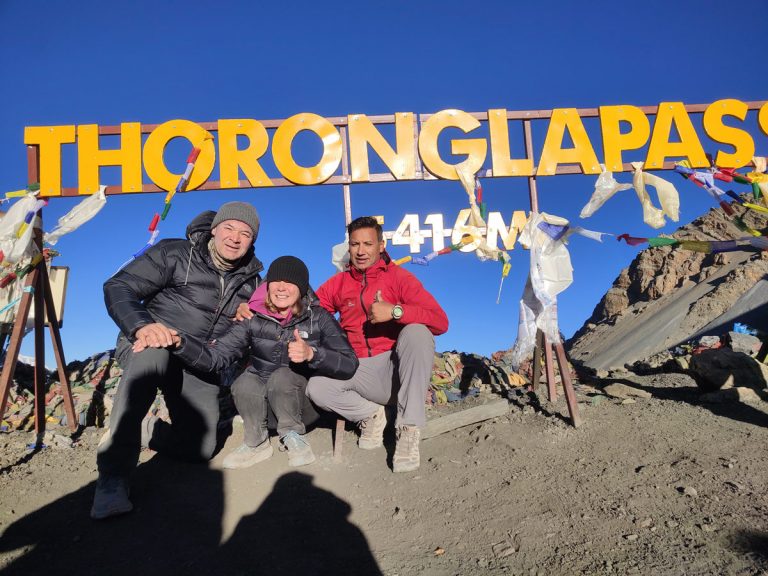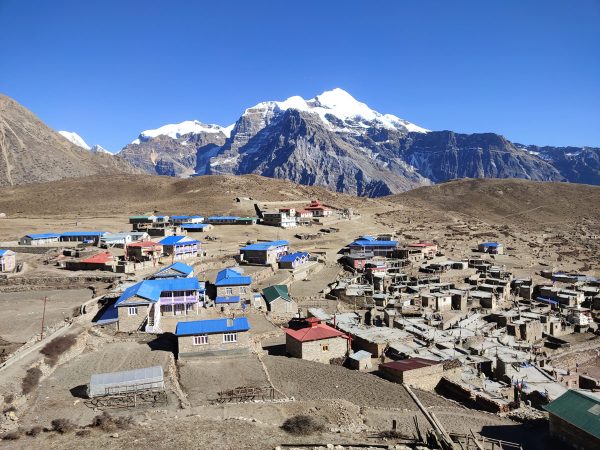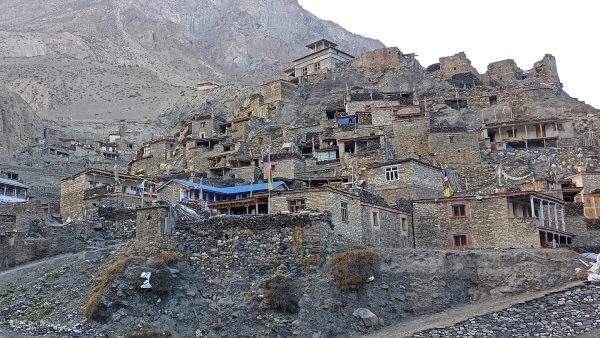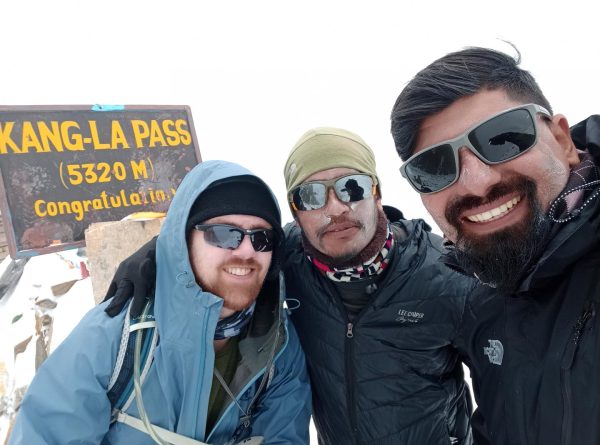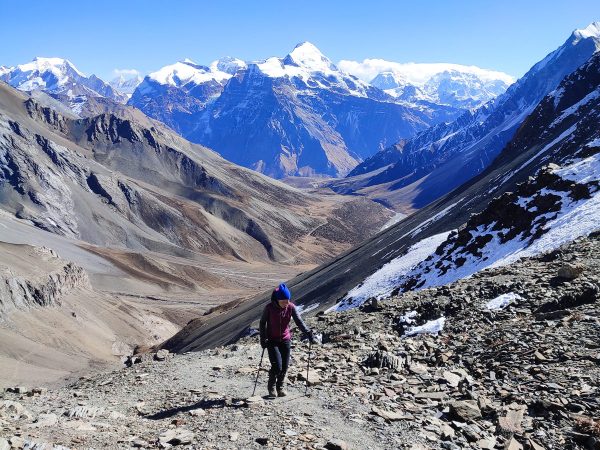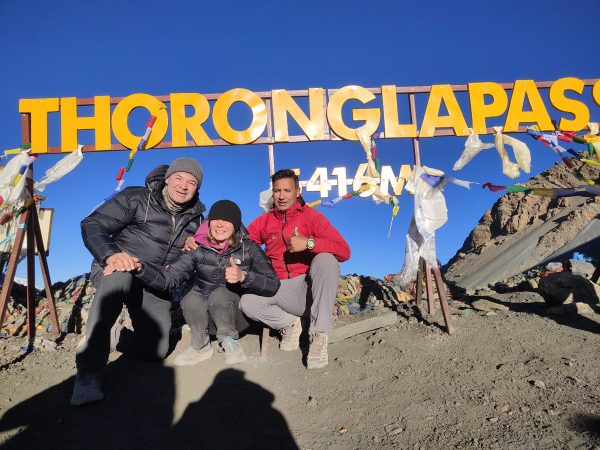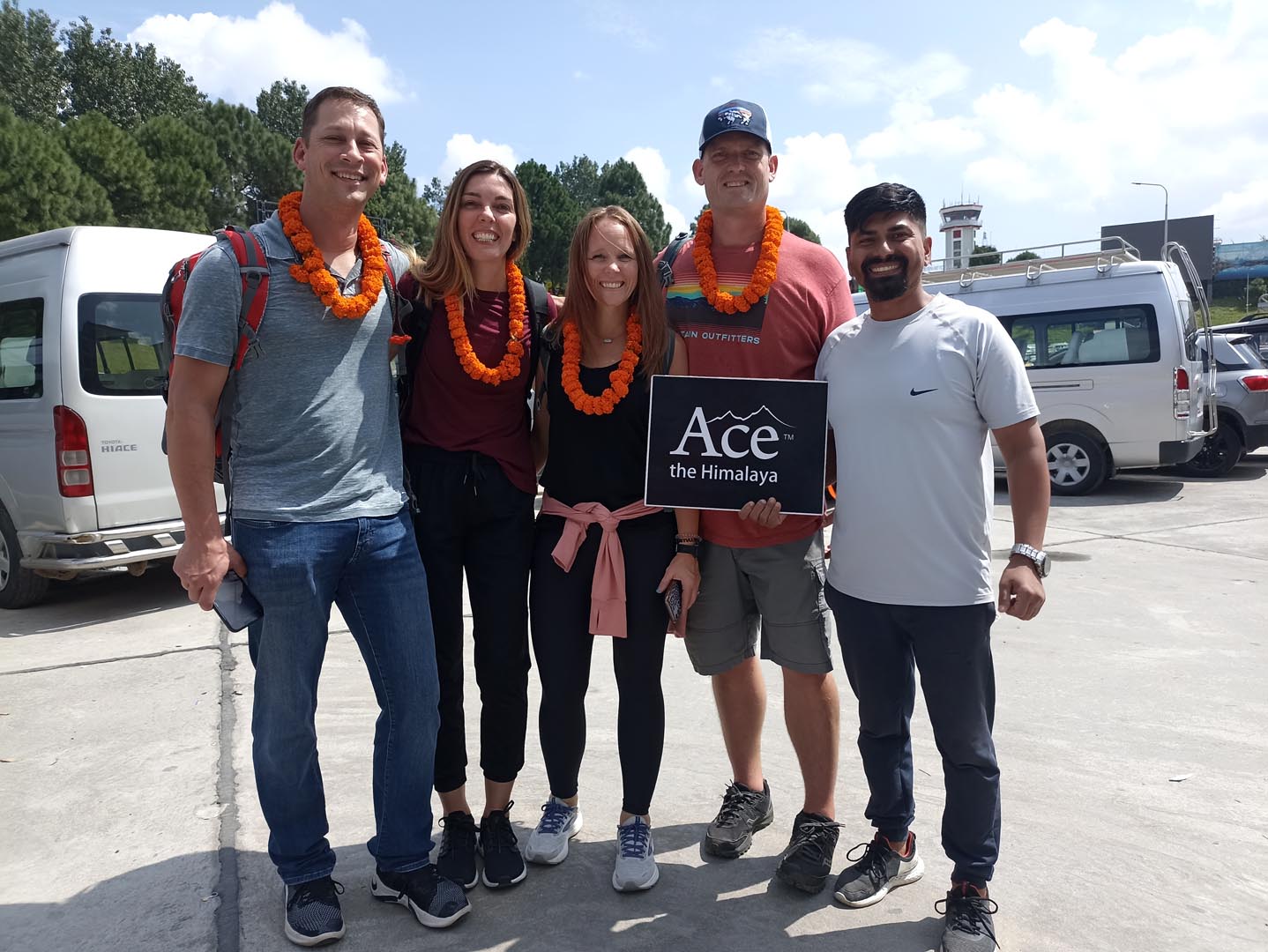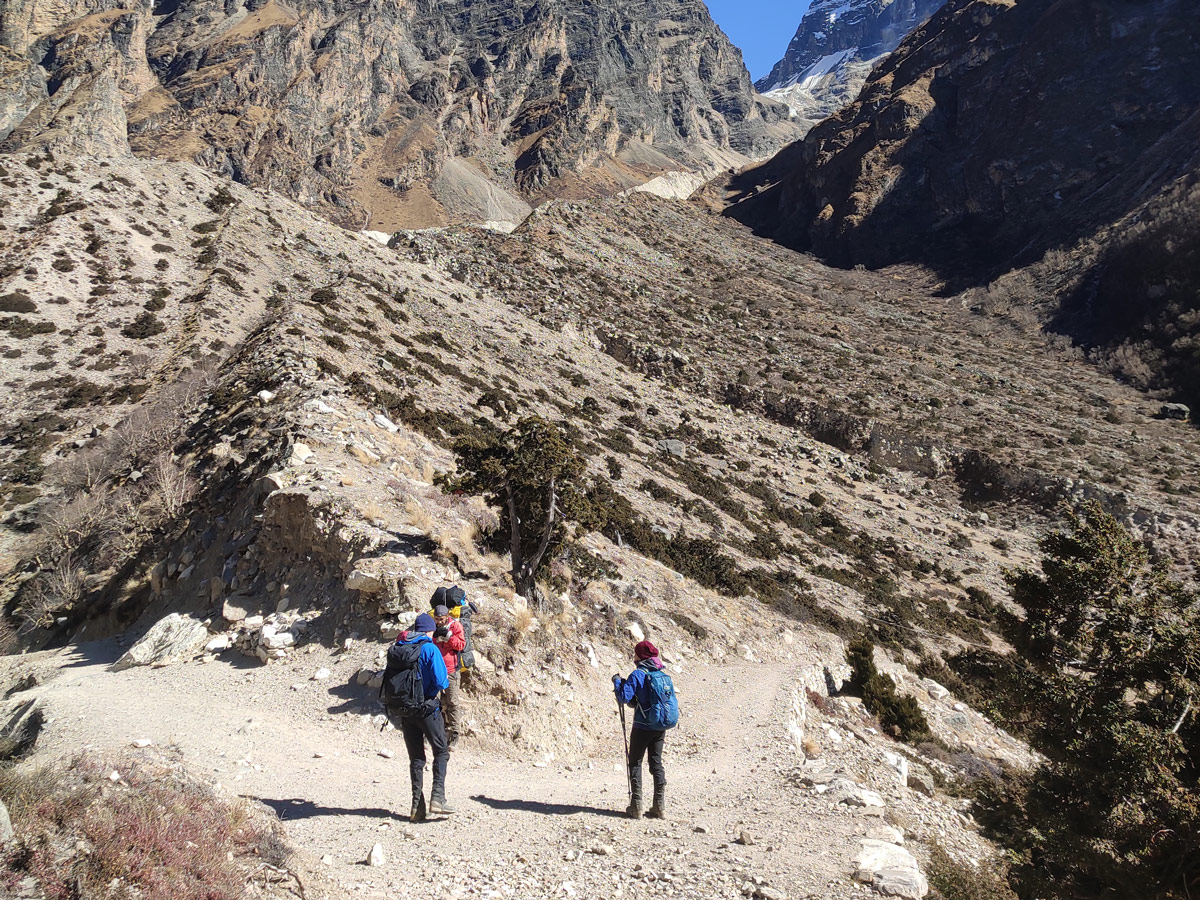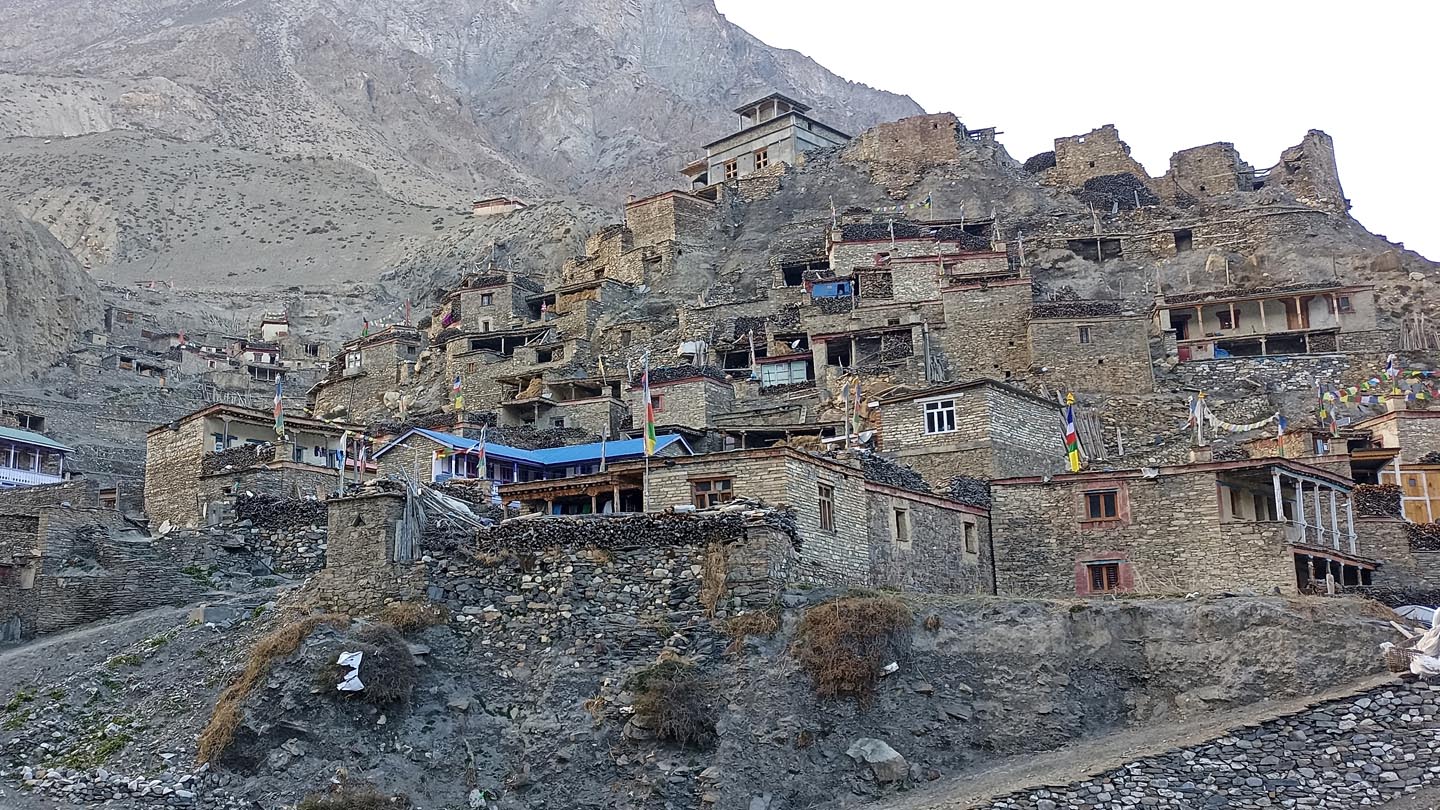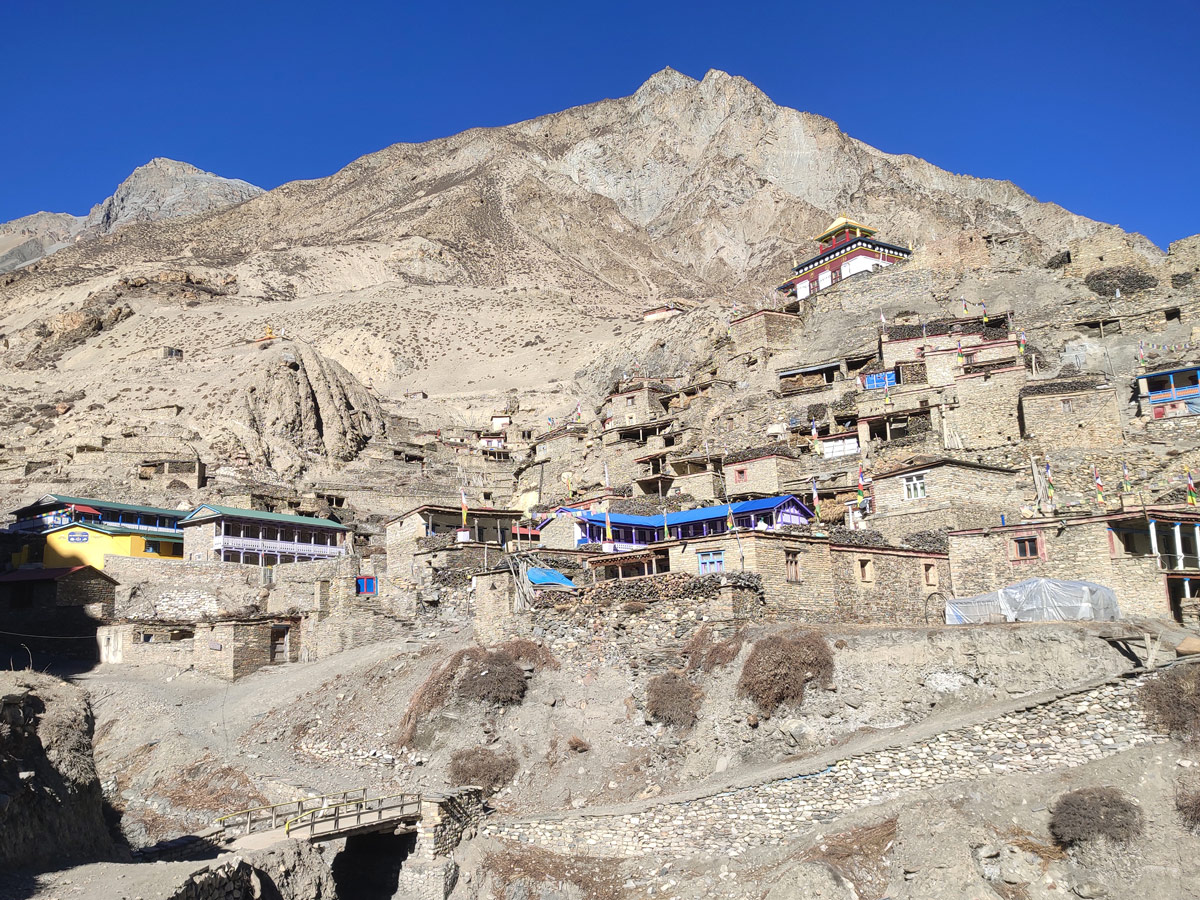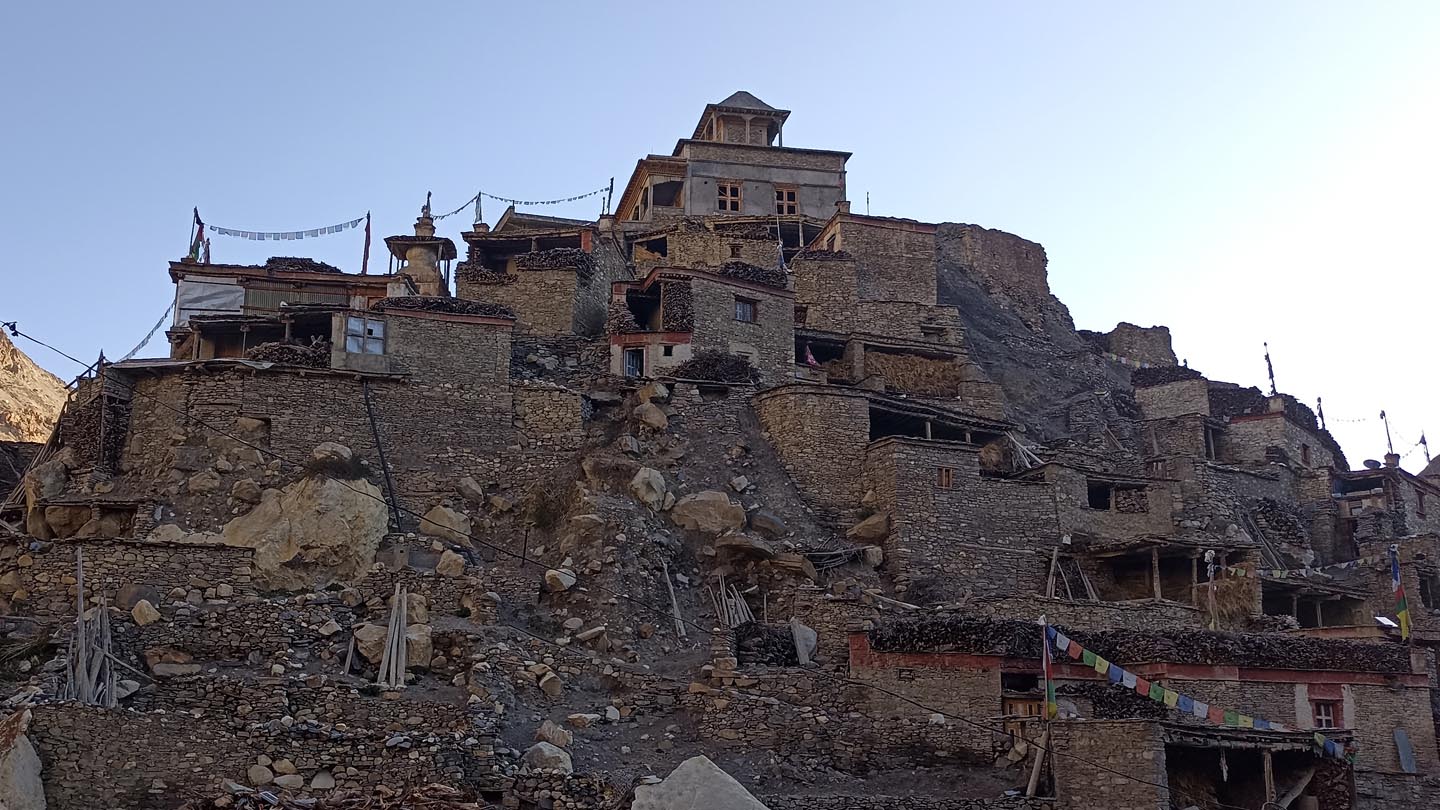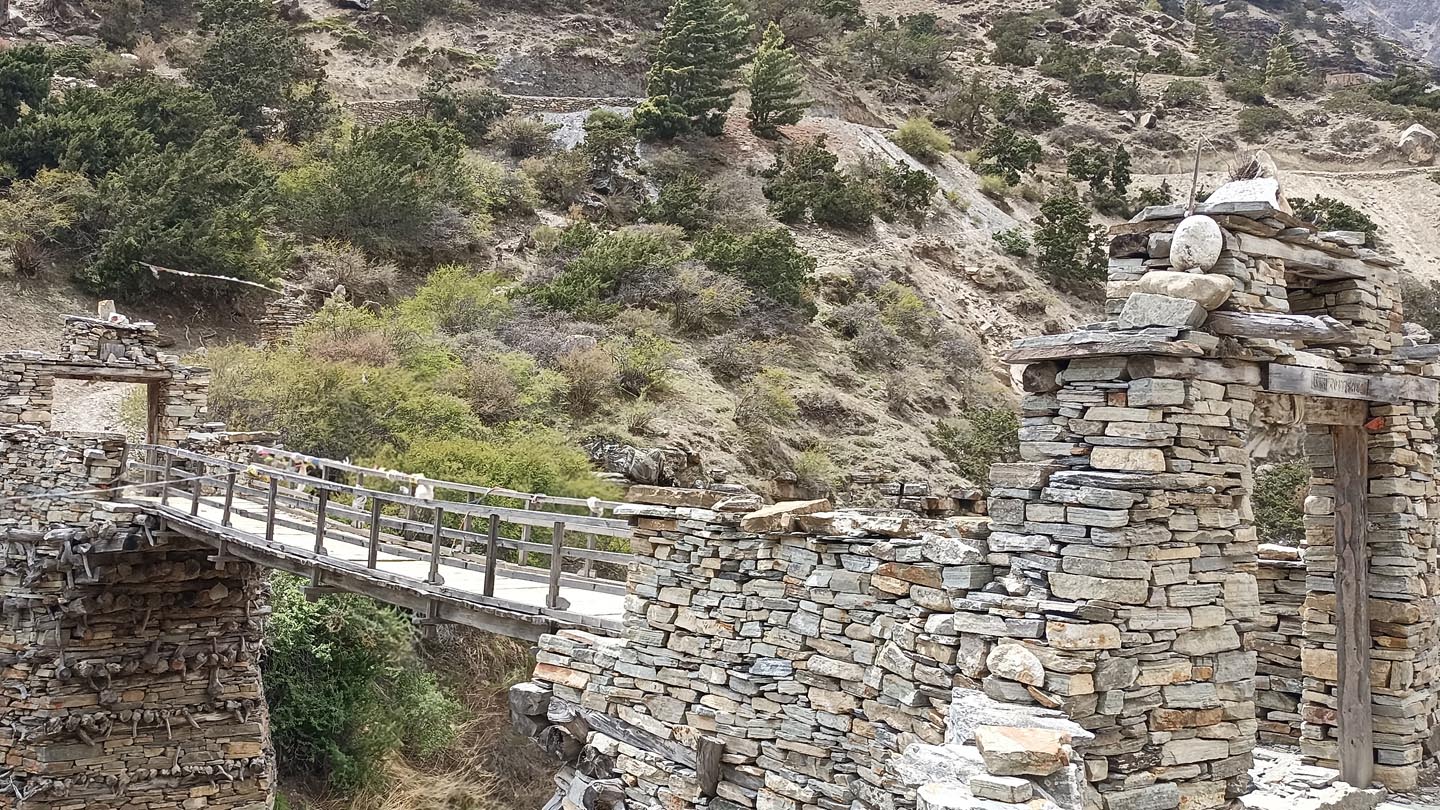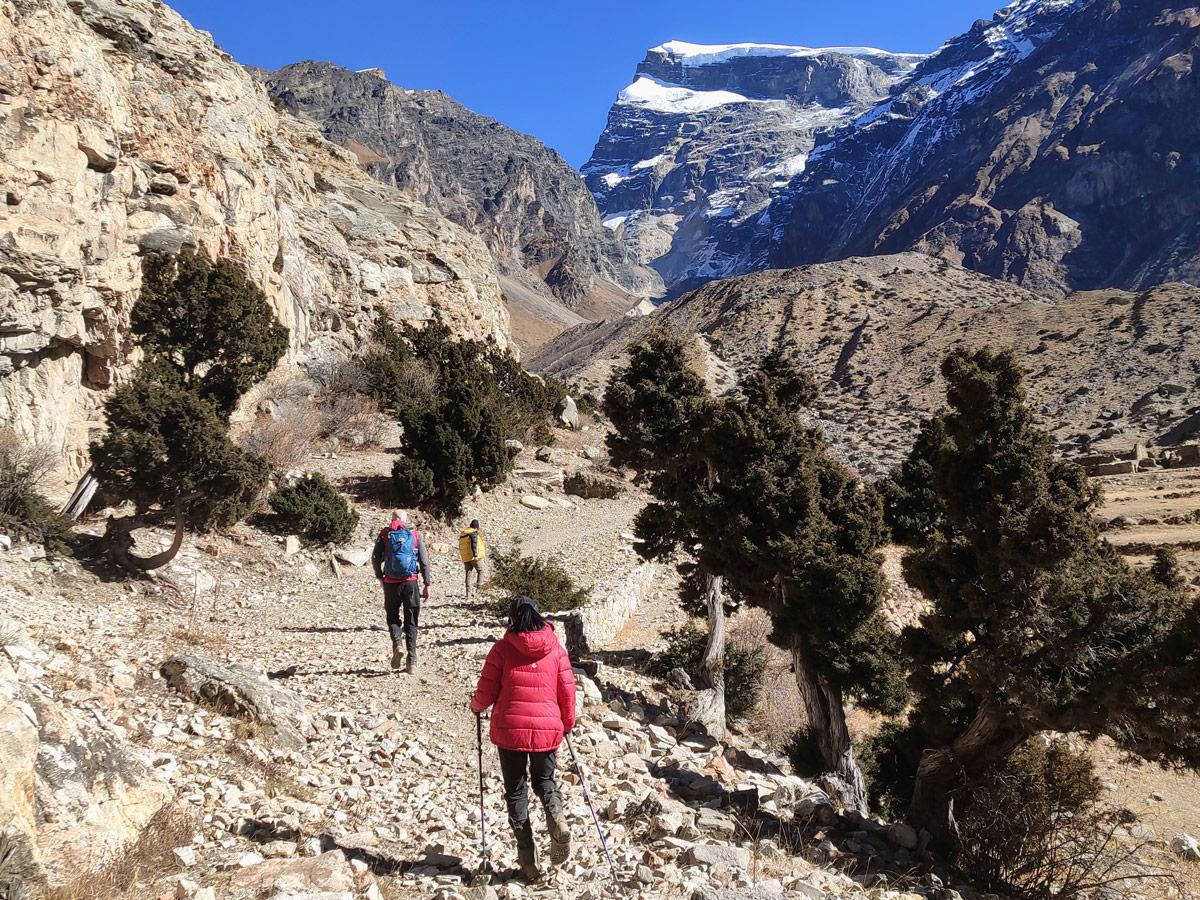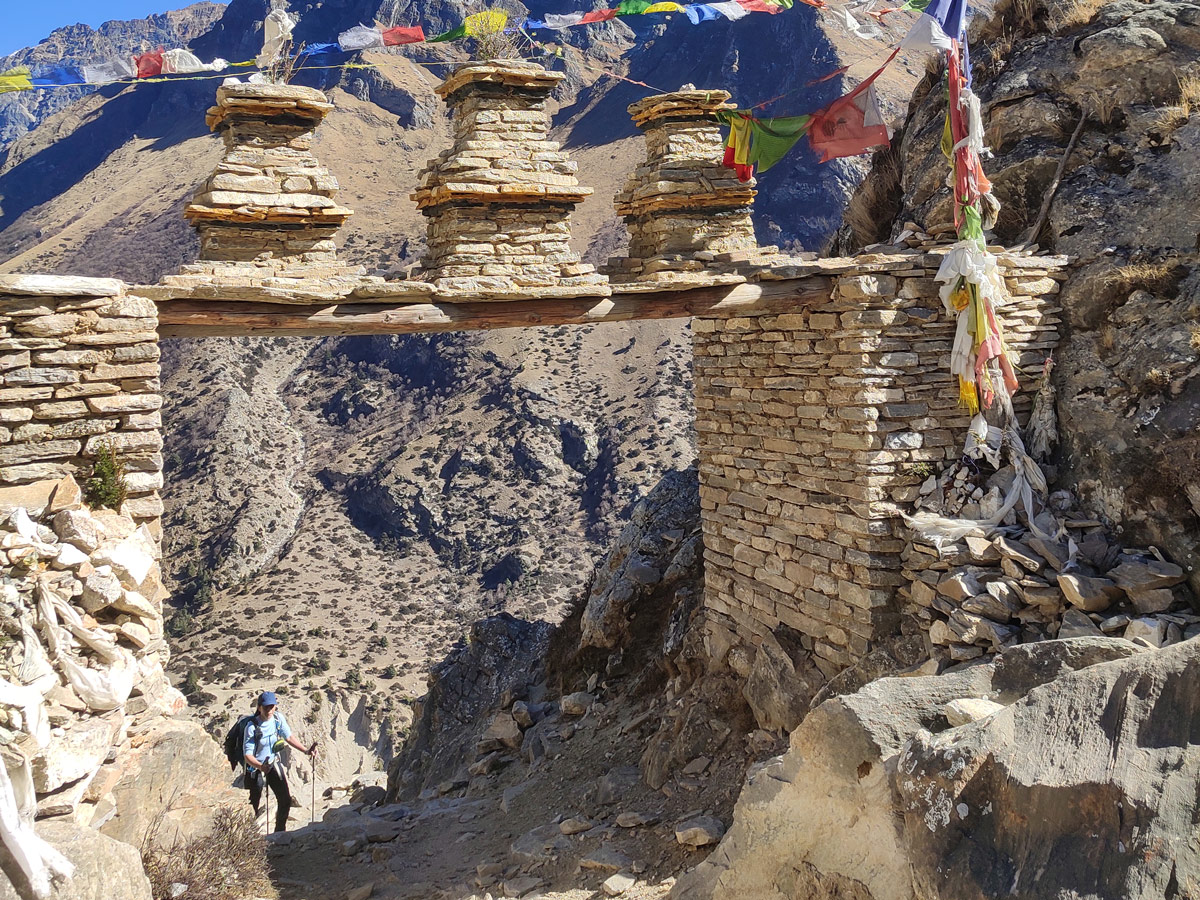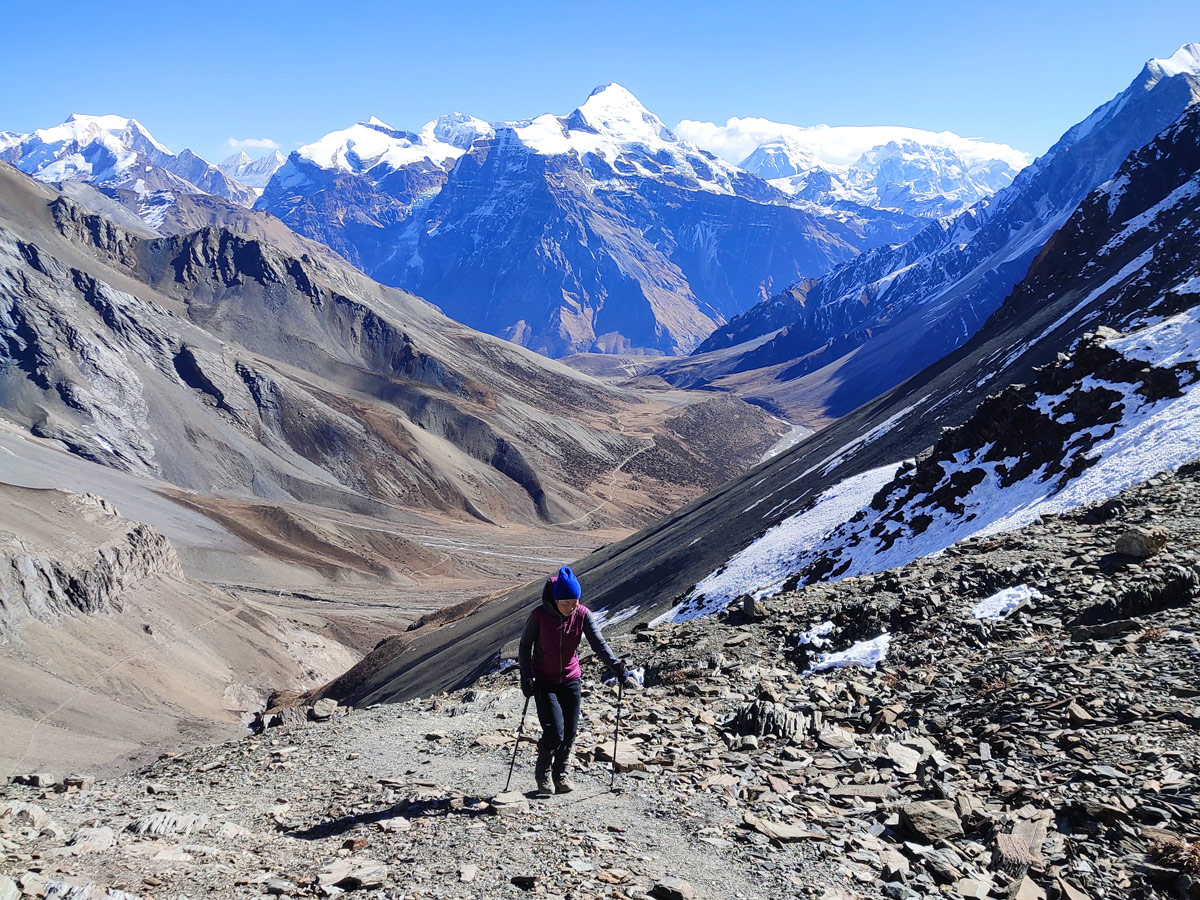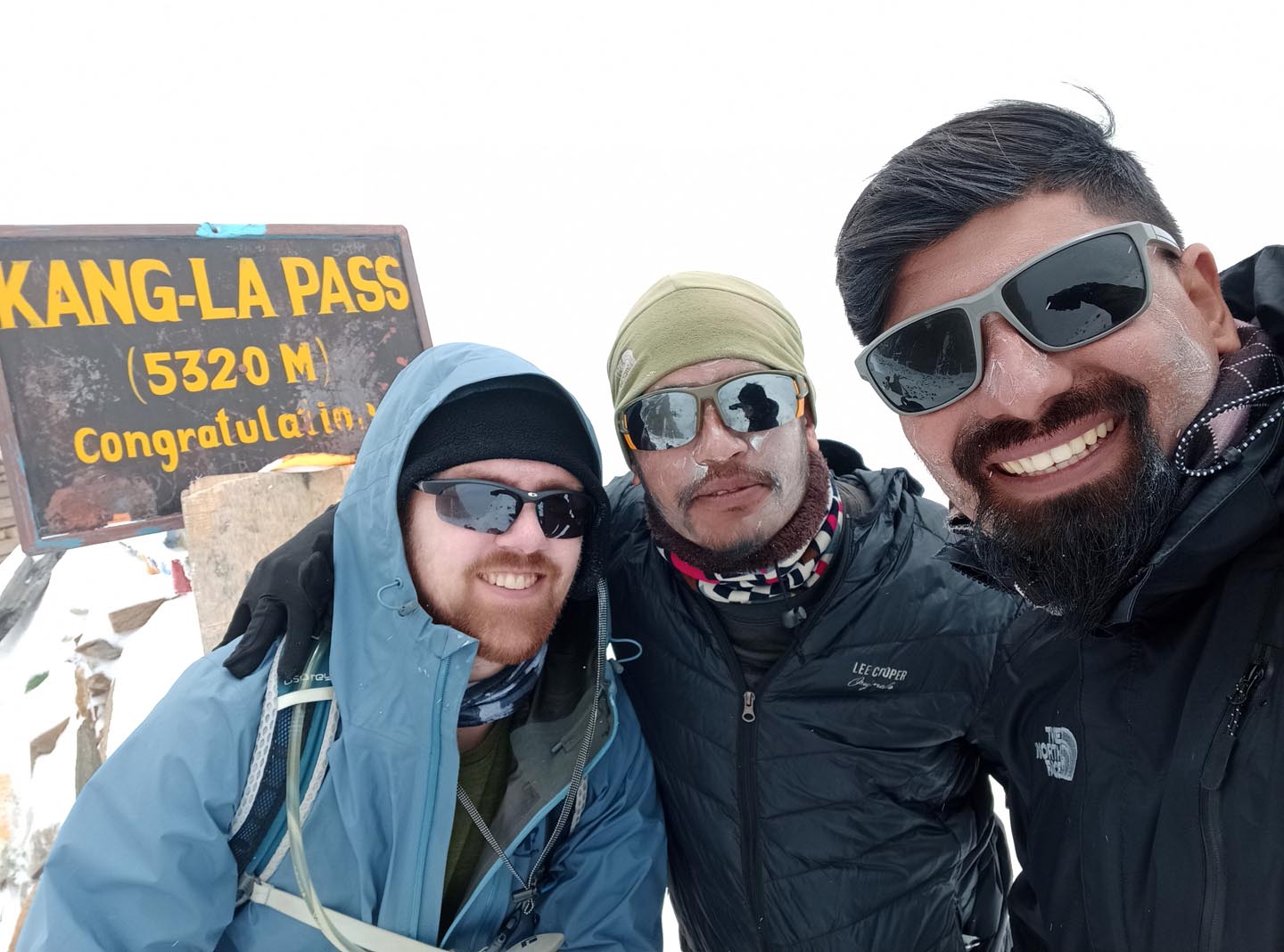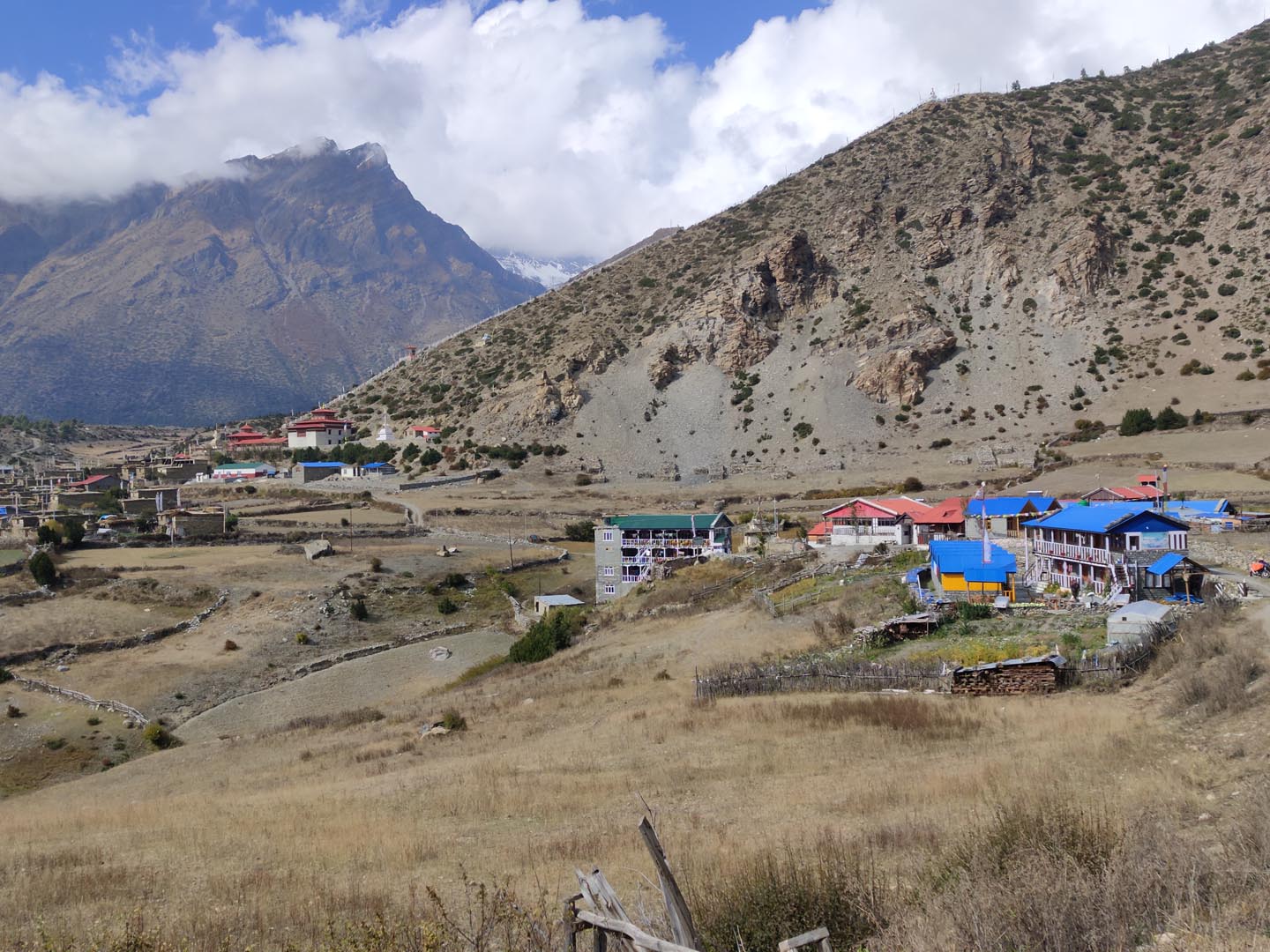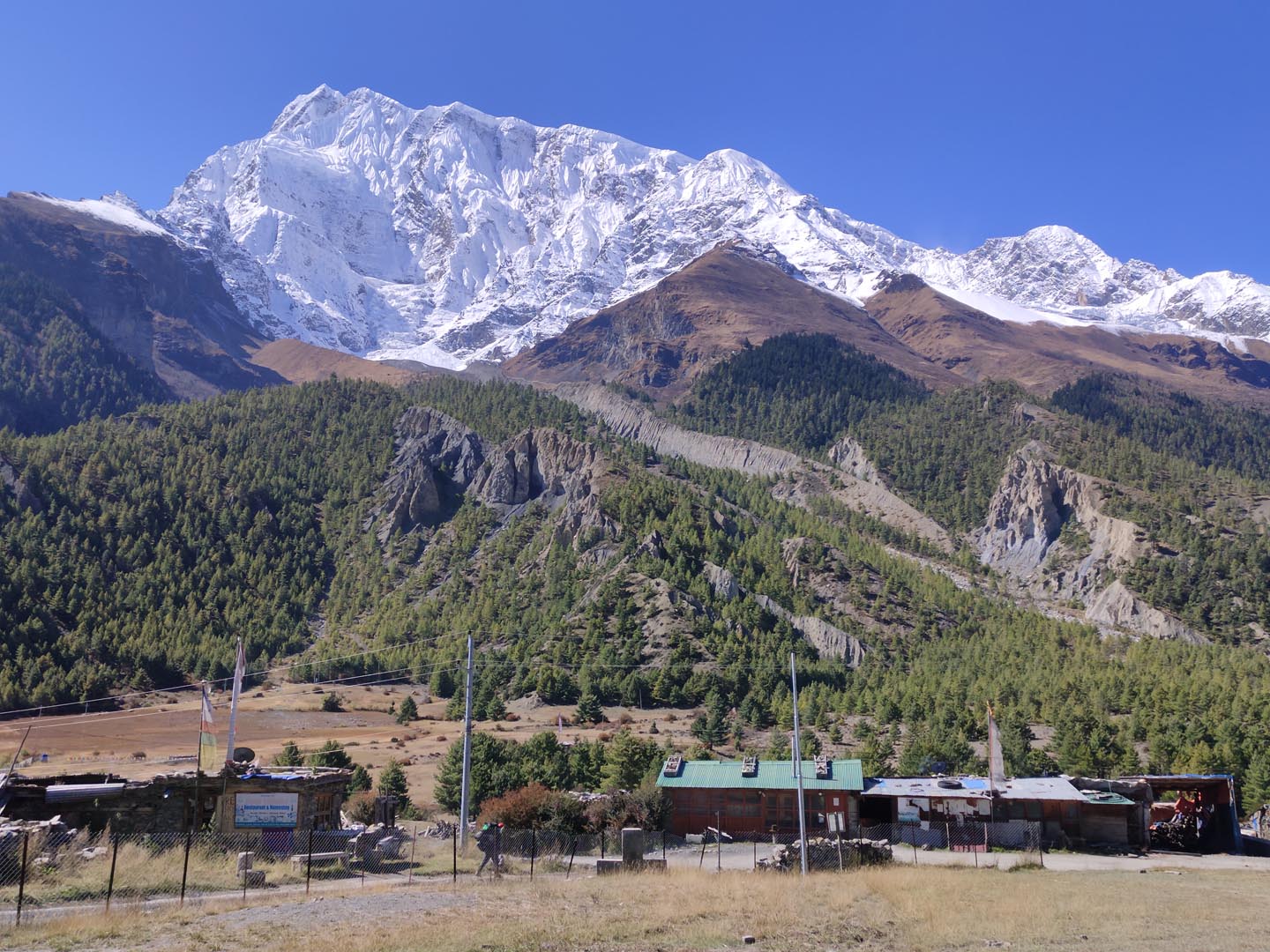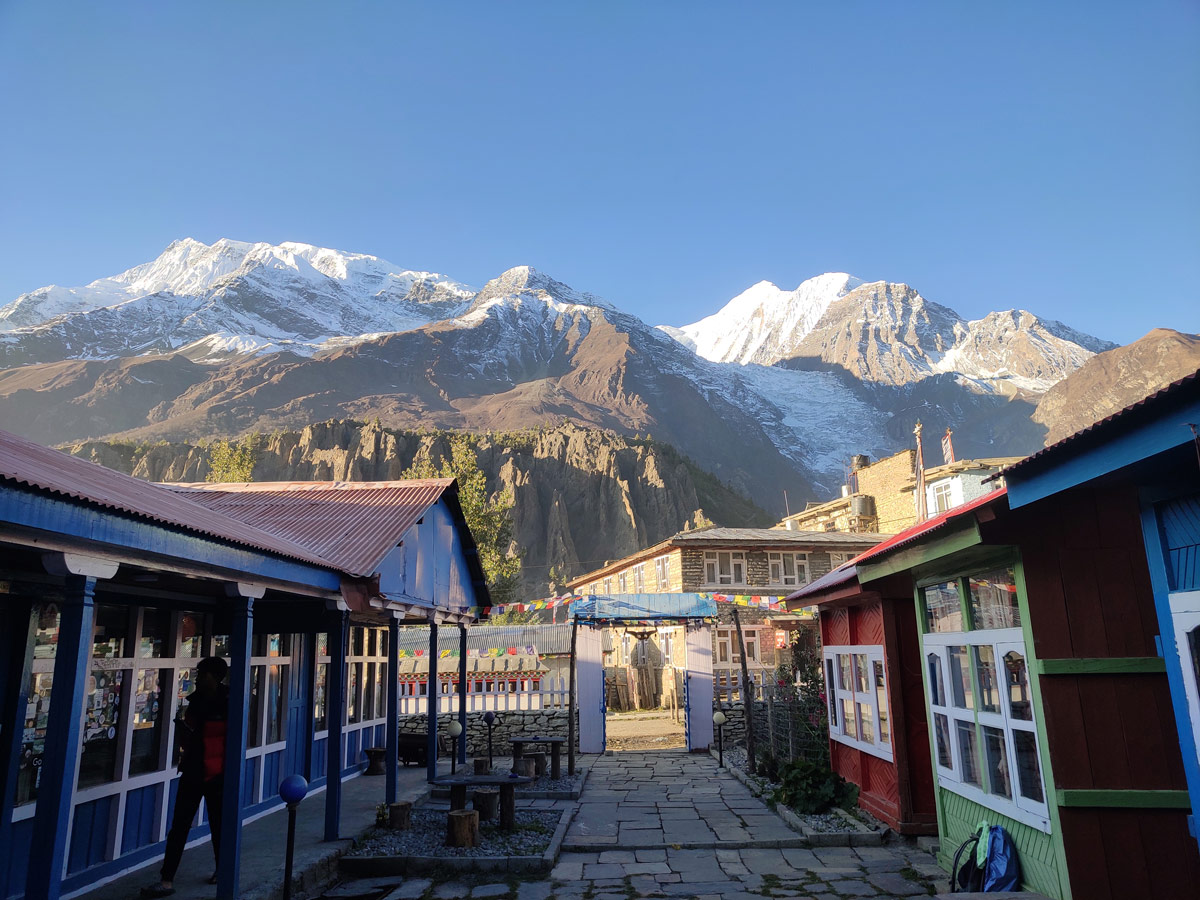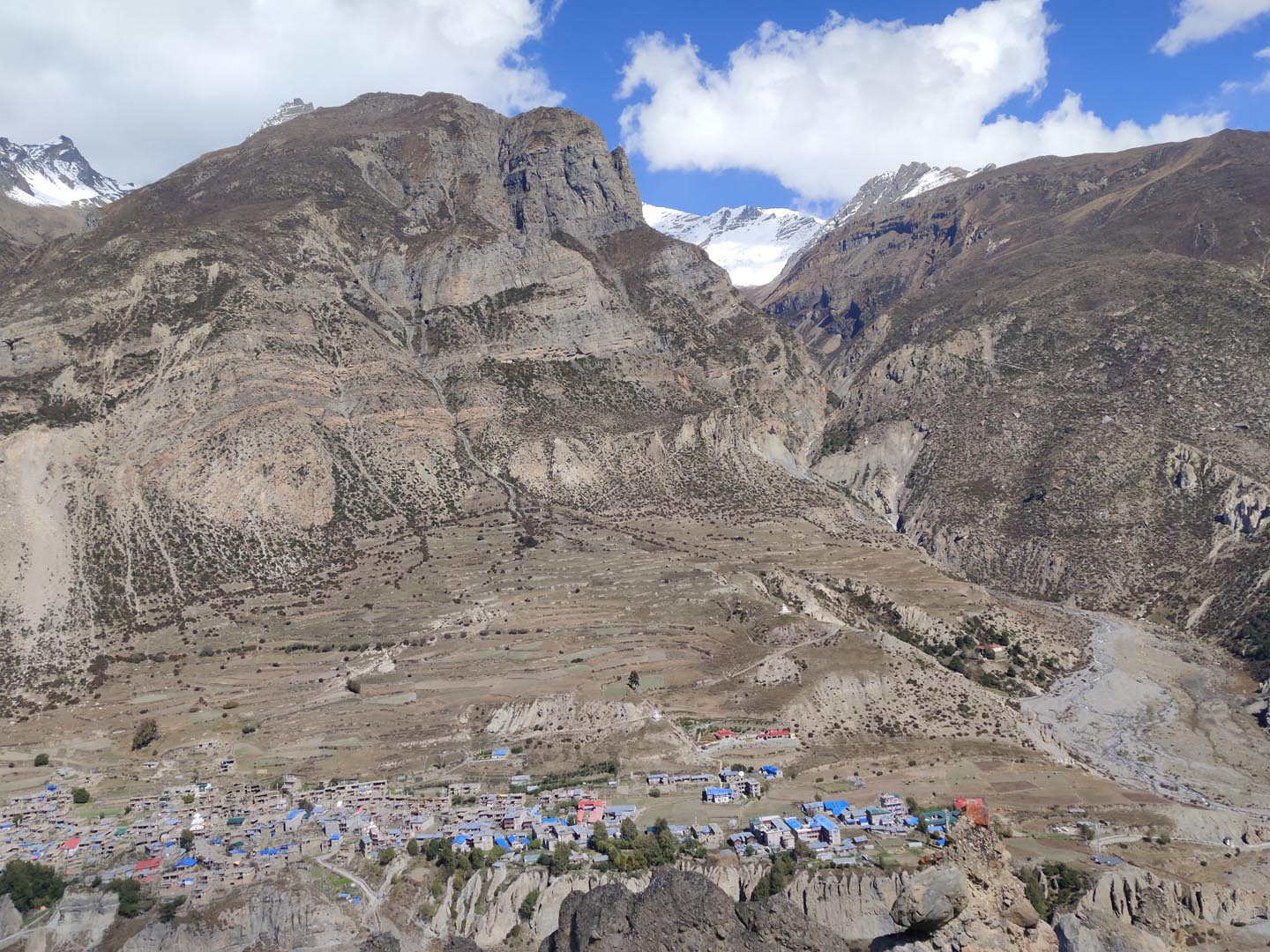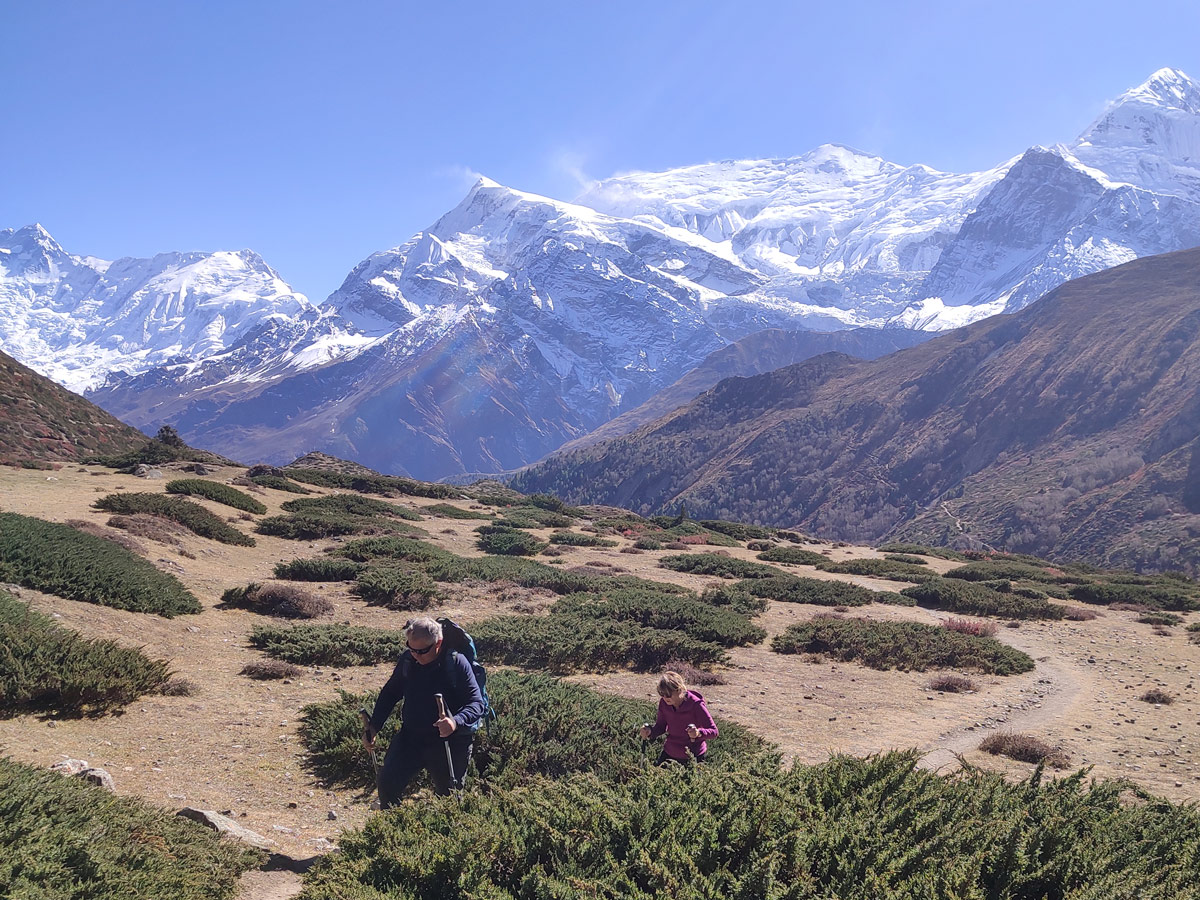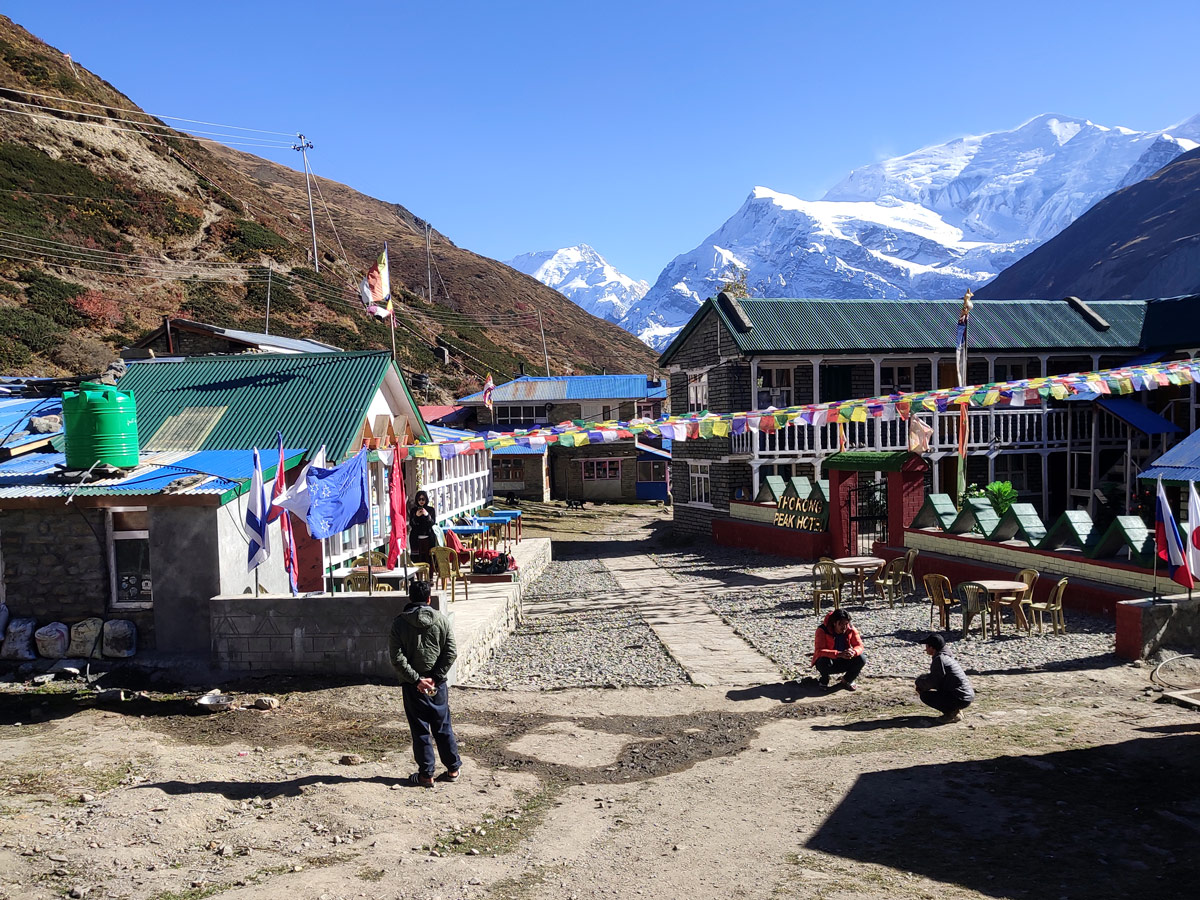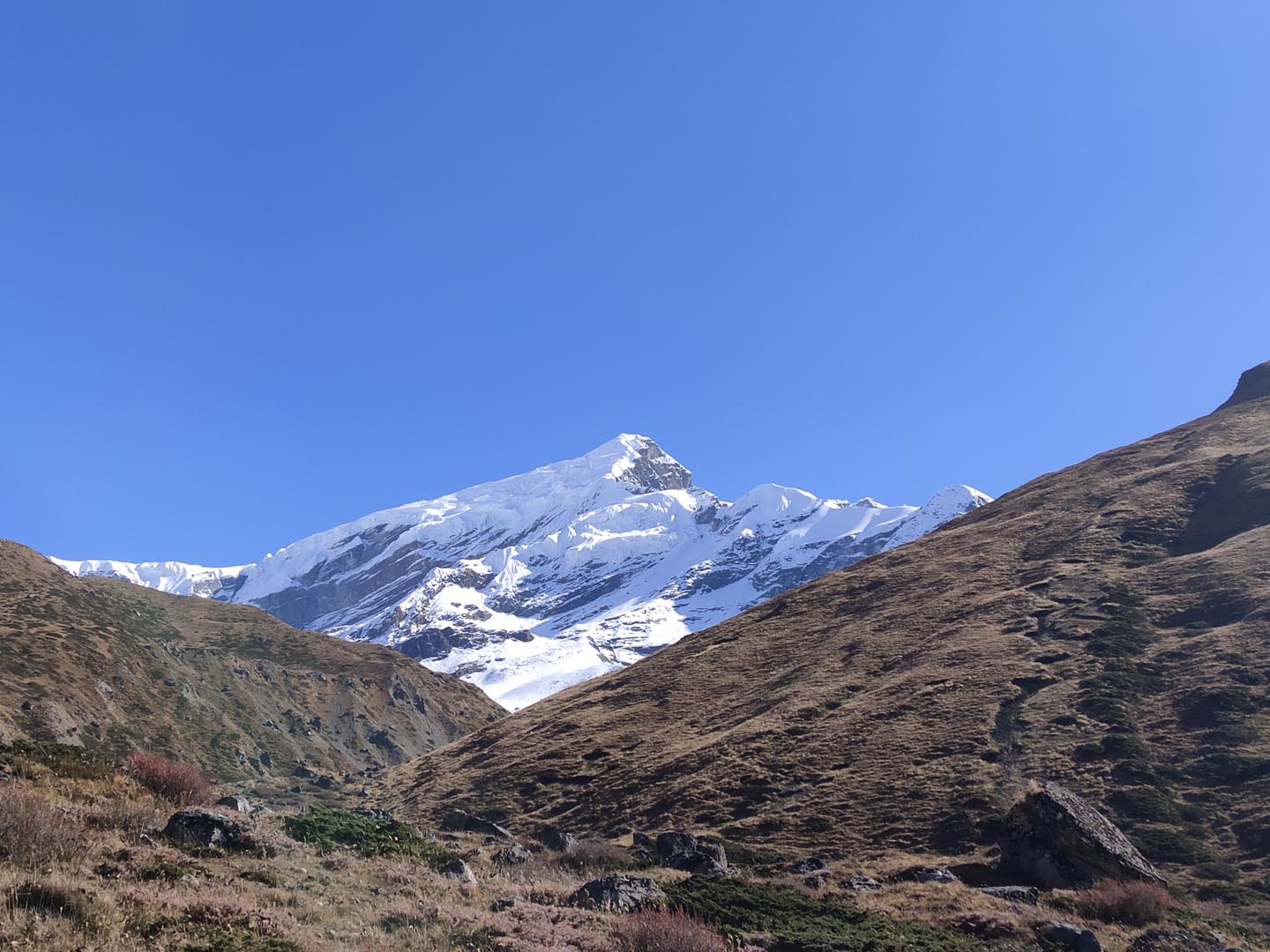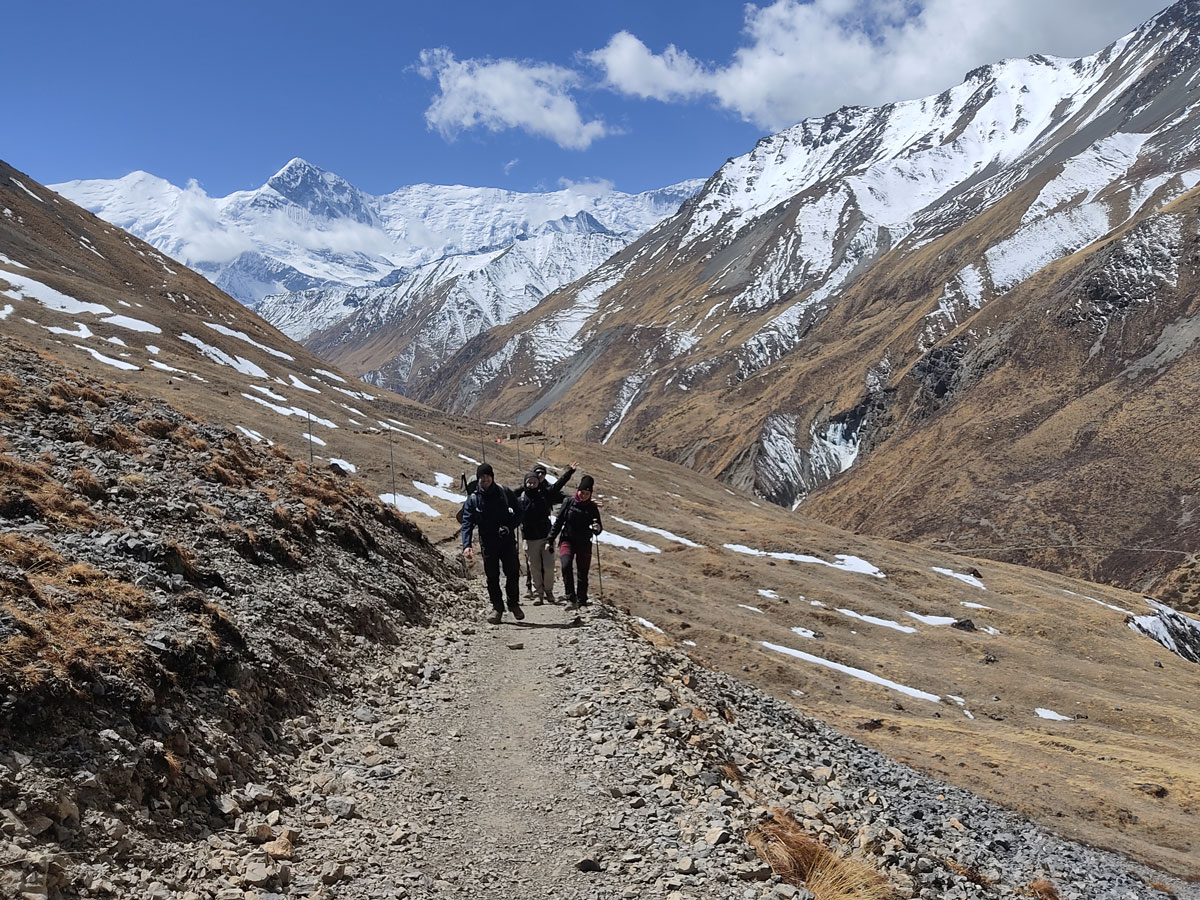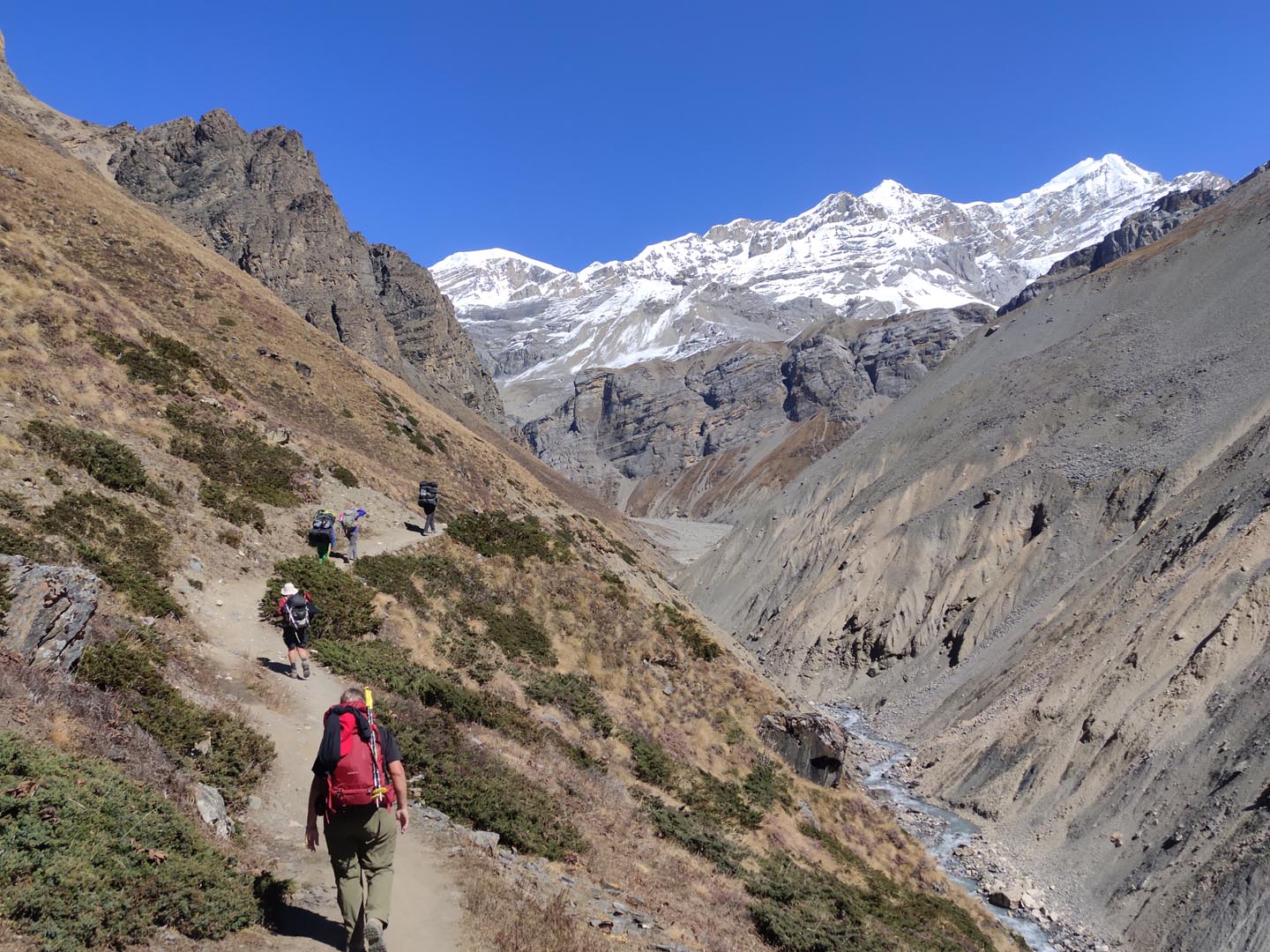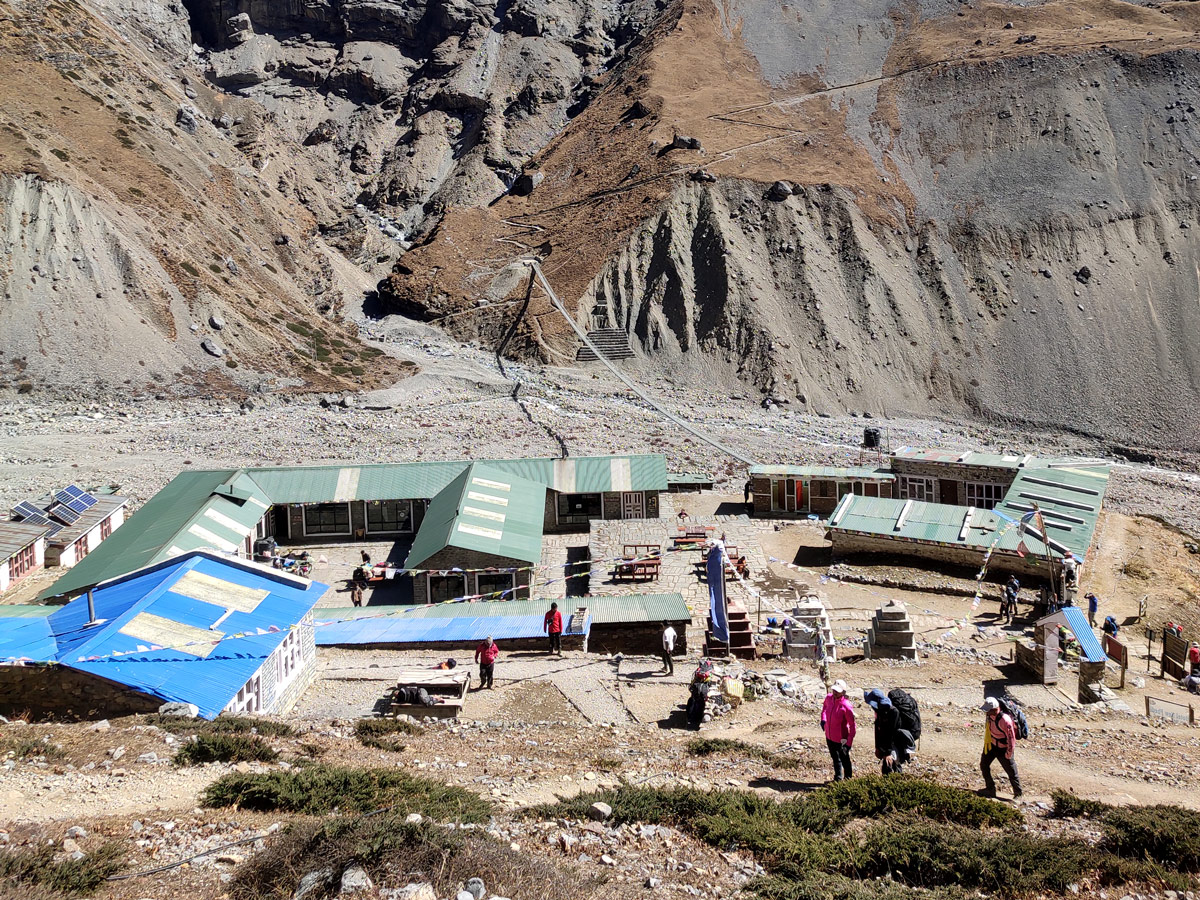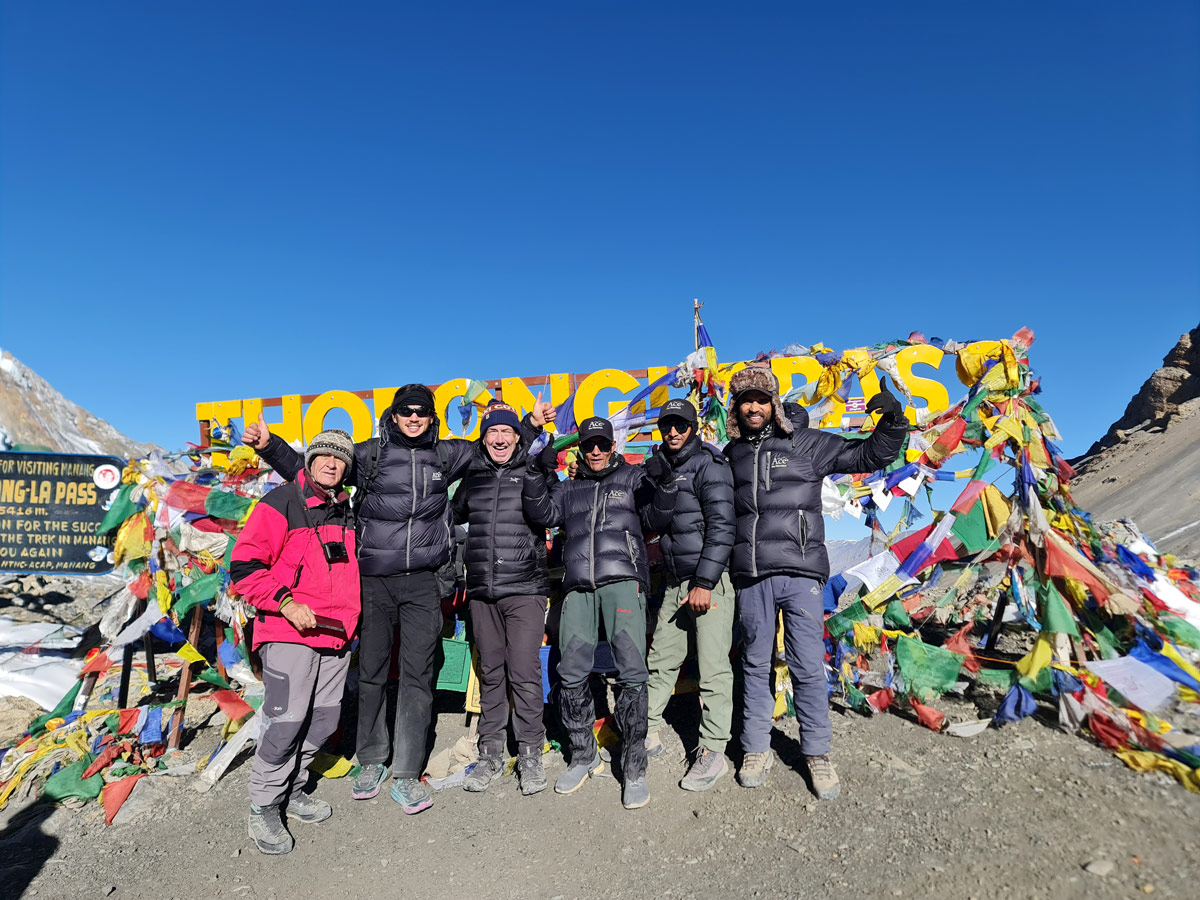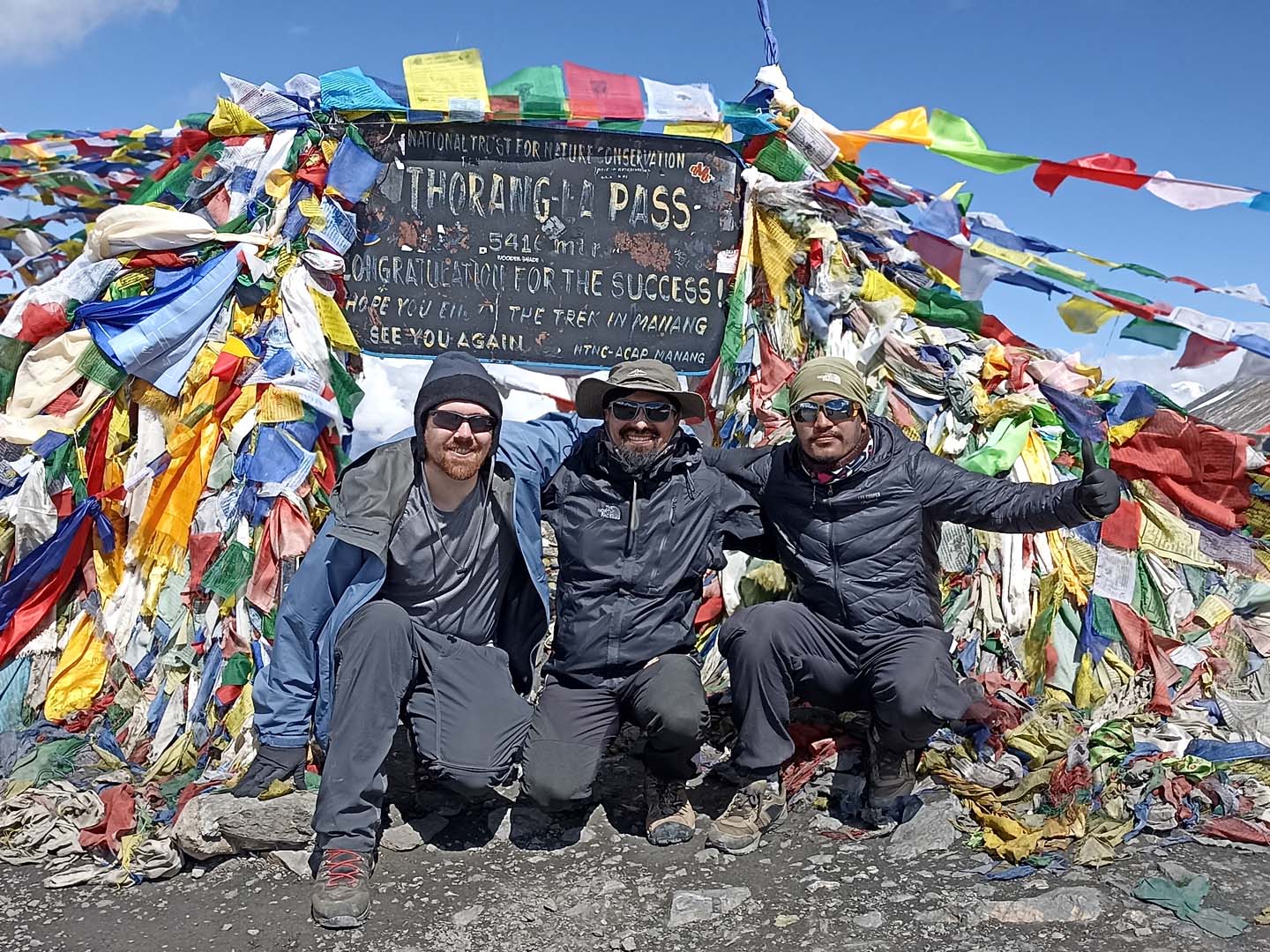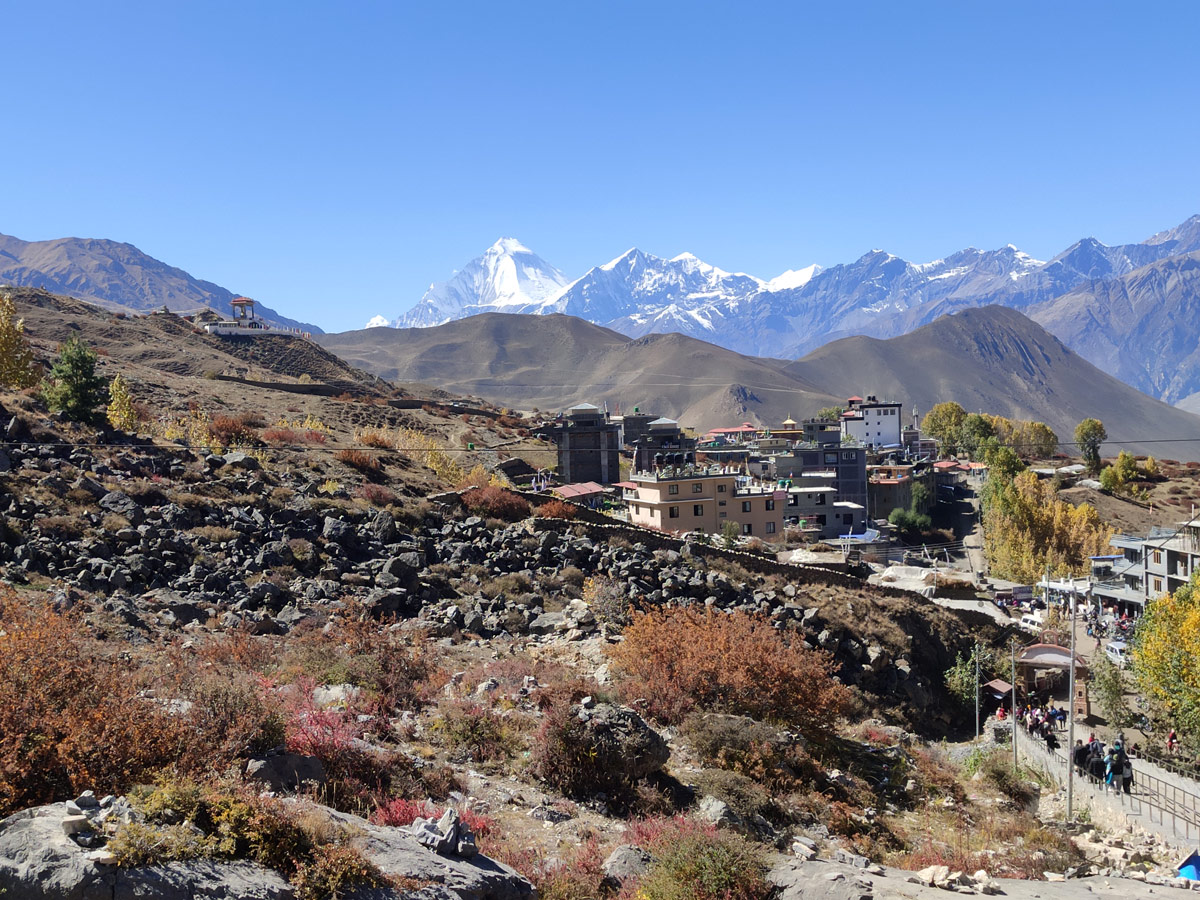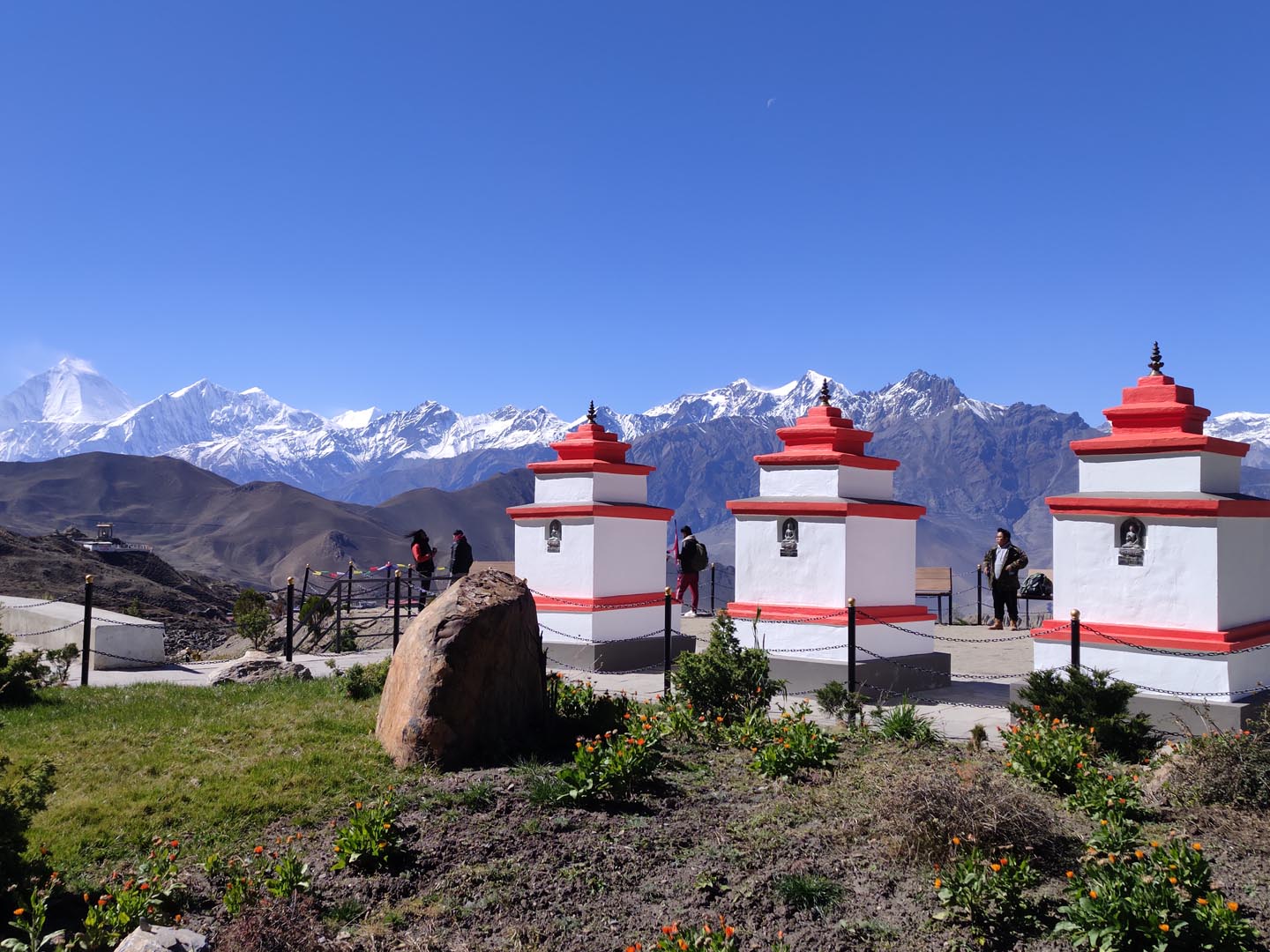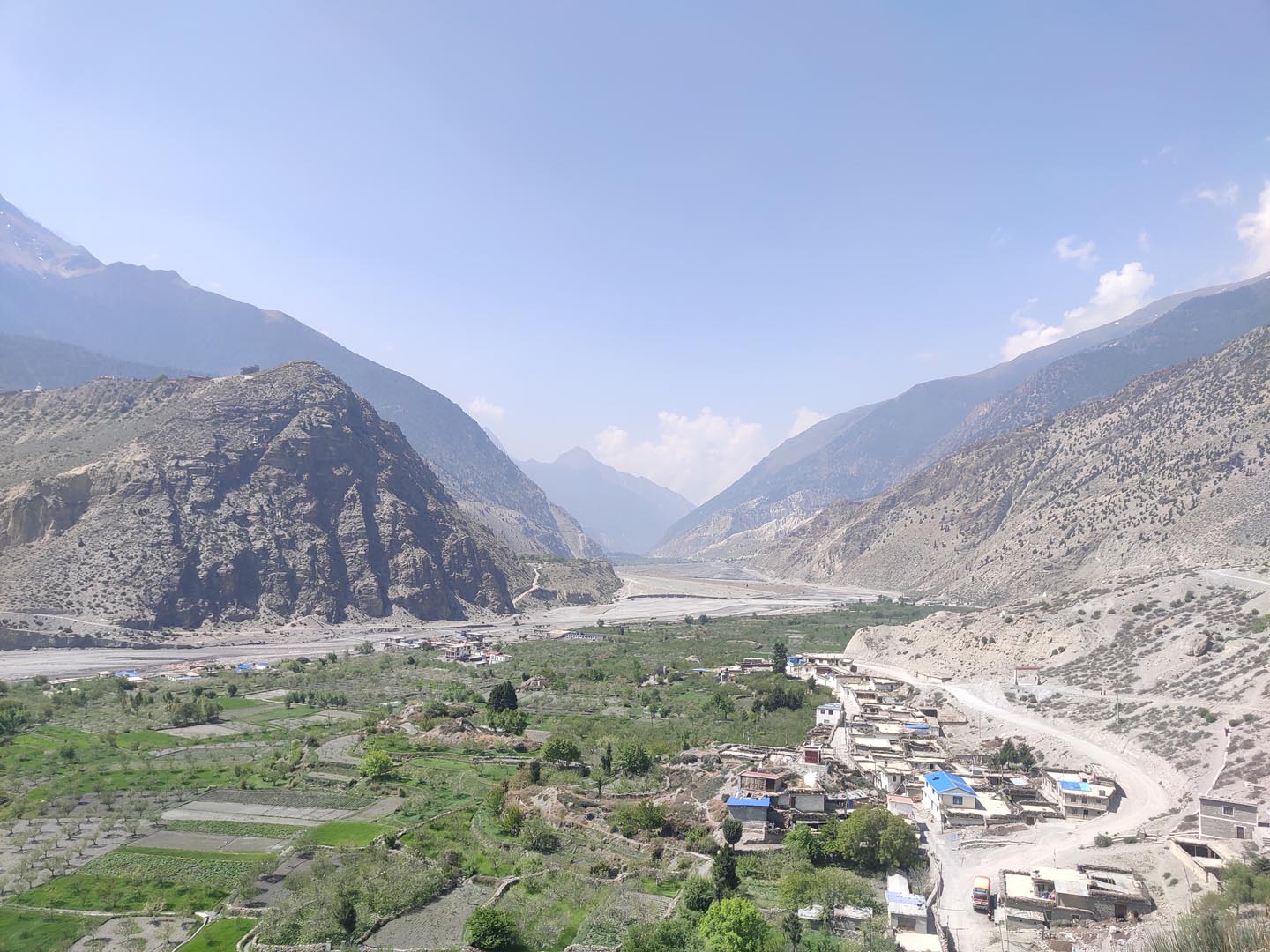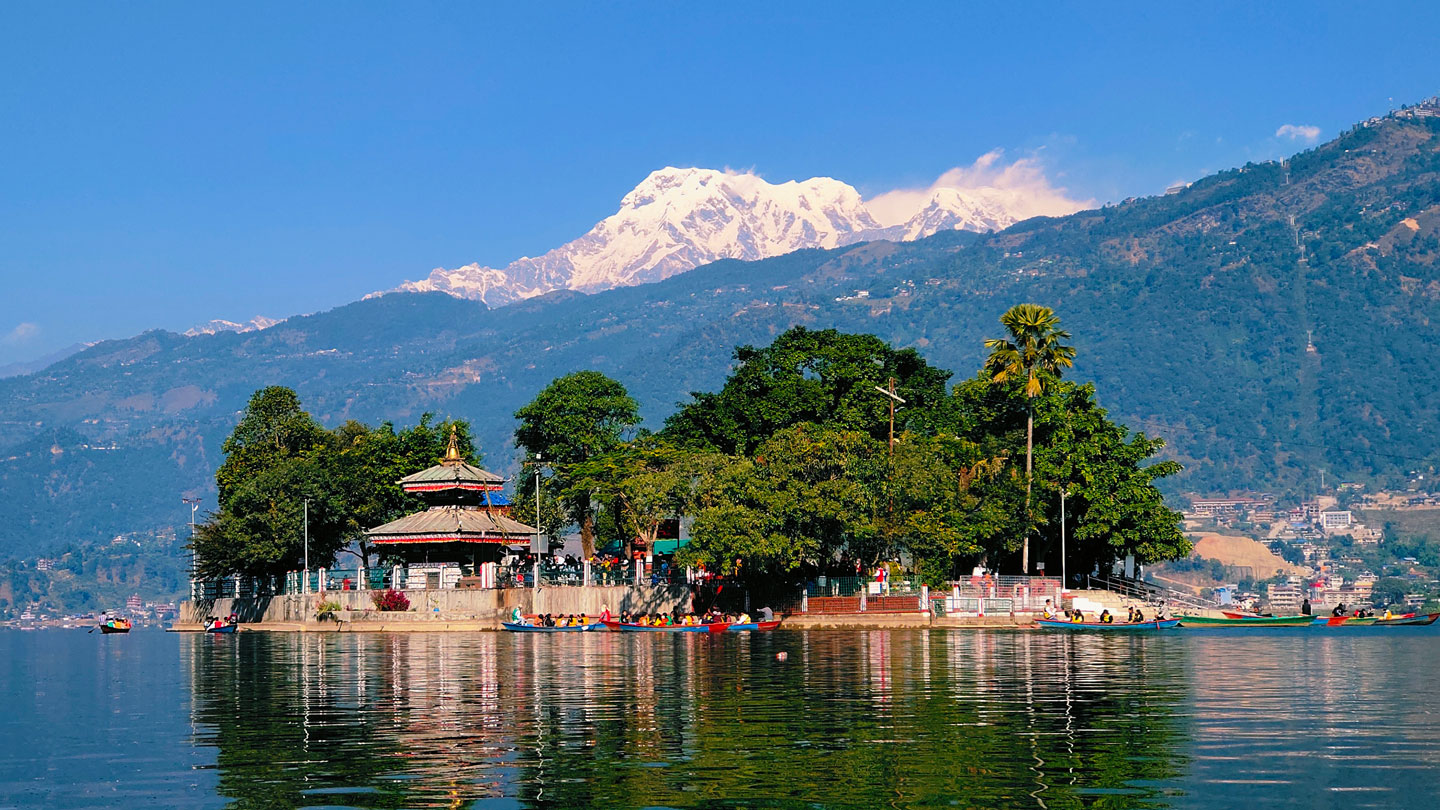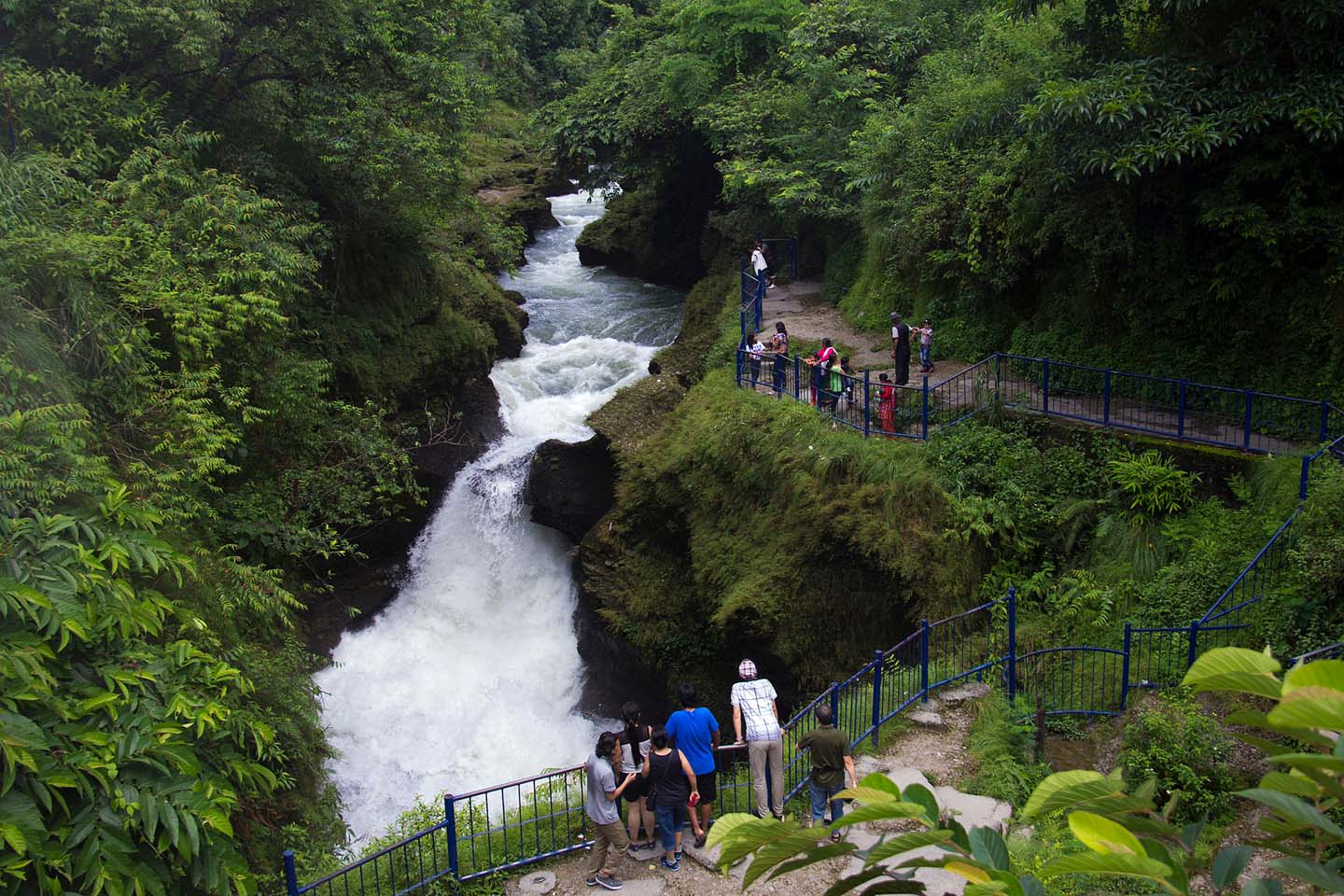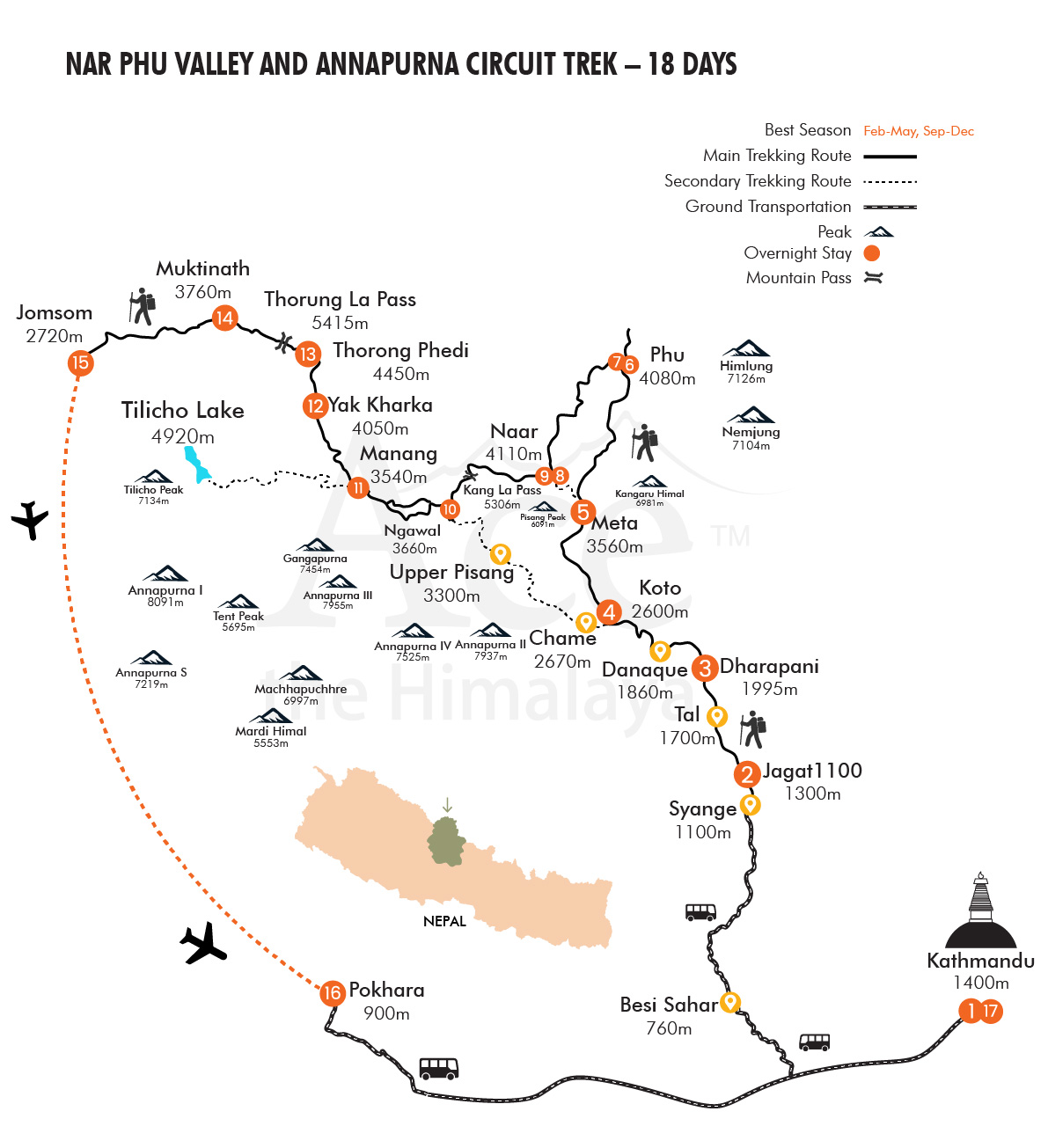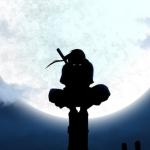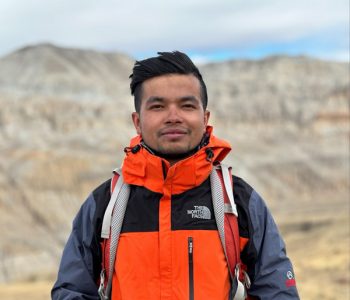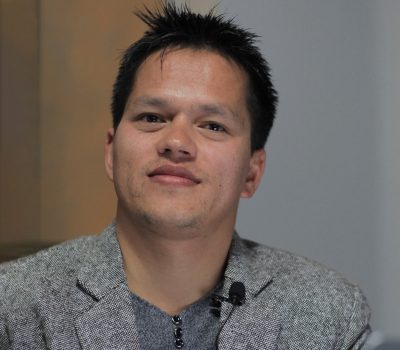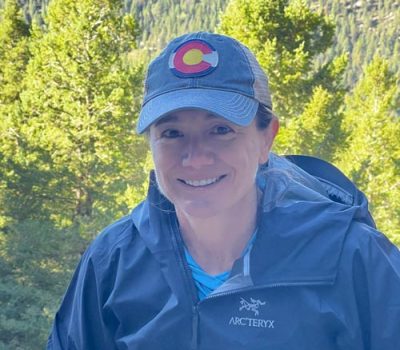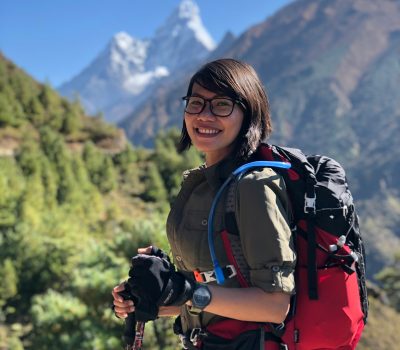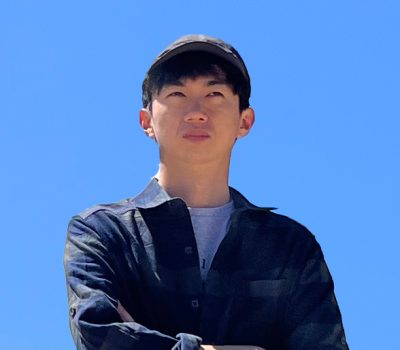Nar Phu Valley Trek with Annapurna Circuit - 18 Days
| No. of people | Price per person |
|---|---|
| 1 Pax | USD 2,650 |
| 2 - 3 Pax | USD 1,950 |
| 4 - 6 Pax | USD 1,750 |
| 7 - 10 Pax | USD 1,700 |
| 11+ Pax | USD 1,650 |
Trek through the restricted Nar-Phu valley, explore the remote Manang region, witness the Buddhist Chortens and embrace the Himalayan ranges through the Nar-Phu and Annapurna Circuit trek.
Nar Phu Trek Highlights
- Picturesque drive along the winding roads between Kathmandu and Jagat.
- Scenic flight from Jomsom to Pokhara.
- Discover the serenity of Kali Gandaki River valley.
- Explore the alluring villages of Nar and Phu.
- Witness the colorful monasteries throughout the trek.
- Panoramic views of the Himalayas.
- Trek through the famous Kangla Pass and Thorong La Pass..
- Visit the beautiful Muktinath temple.
Nar Phu Valley Trek Overview
Nar Phu valley trek is one of the rare and privileged treks in the restricted region of Nar Phu valley. Lying on the most remote side of Manang, access to this beautiful place is provided only with a purchased permit. During the winter season, these areas are completely filled with snow thus the trek and exploration are only possible during the other seasons.
The two valleys of Nar and Phu are the main highlights along with the canyons, the dense deep forests, the waterfalls, suspension bridges, the two famous passes Kangla Pass and Thorong La Pass, and none other than the Himalayan ranges.
The trip begins with the exploration and sightseeing around the UNESCO world heritage sites in Kathmandu valley. The trek starts on the third day from Jagat. The trails are rough, rugged, and winding yet the sceneries captivate the trekker throughout the journey.
The Buddhist monasteries, chortens, and prayer flags along the trail make one feel like traveling through the Tibetan region. The trek also takes us to the Muktinath temple. It is believed that a person gets salvation upon visiting the temple.
The final scenic flight to Pokhara allows one to enjoy the view of the Himalayan ranges and the beautiful Pokhara valley. The last day at Pokhara can be utilized by sightseeing around the various lakes and used to rest and relaxing.
Since the normal Annapurna Circuit has been easily accessed by motorable roads, the Nar Phu Valley trek can be a good replaceable trail to enjoy the trek along the countryside of Nepal.
Short Itinerary
Arrive at Tribhuvan International Hotel in Kathmandu (1,400 m) and Transfer to the Hotel. Overnight at a Hotel.
Drive to Jagat (1,300 m) from Kathmandu by Private Tourist Vehicle – 8 to 10 hours. Overnight at a Guesthouse.
Trek to Dharapani (1,995 m) from Jagat – 7 to 8 hours. Overnight at a Guesthouse.
Trek to Koto (2,600 m) from Dharapani – 5 to 6 hours. Overnight at a Guesthouse.
Trek to Meta (3,560 m) from Koto – 7 to 8 hours. Overnight at a Guesthouse.
Trek to Phu Gaon (4,080 m) from Meta – 7 to 8 hours. Overnight at a Guesthouse.
Acclimatization Day at Phu Gaon. Overnight at a Guesthouse.
Trek to Nar (4,110 m) from Phu Gaon – 6 to 7 hours. Overnight at a Guesthouse.
Acclimatization Day at Nar. Overnight at a Guesthouse.
Trek to Ngawal (3,660 m) via crossing Kang La Pass (5,306 m) from Nar – 7 to 8 hours. Overnight at a Guesthouse.
Trek to Manang (3,540 m) from Ngawal – 4 to 5 hours. Overnight at a Guesthouse.
Trek to Yak Kharka (4,050 m) from Manang – 3 to 4 hours. Overnight at a Guesthouse.
Trek to Thorong Phedi (4,450 m) from Yak Kharka – 3 to 4 hours. Overnight at a Guesthouse.
Trek to Muktinath (3,760 m) via crossing Thorong La (5,415 m) from Thorong Phedi – 7 to 8 hours. Overnight at a Guesthouse.
Trek to Jomsom (2,720 m) from Muktinath – 5 to 6 hours. Overnight at a Guesthouse.
Early-Morning flight to Pokhara from Jomsom – 30 minutes. Overnight at a Guesthouse.
Early-Morning Drive back to Kathmandu in a tourist bus- 7 to 9 hours. Overnight at a Hotel.
Transfer to International Airport for Final Departure.
 Note
Note
The trail of Nar Phu and Annapurna Circuit route at a few places (Jagat, Dharapani, Koto, Manang, Muktinath, Jomsom) are facilitated with motorable roads. The roads are not as busy but the trail passes through them time and again. This is to notify you that the sceneries are the same and also the guides will try their best to escape the motorable roads throughout the trail.
Please be advised that extensive road construction along the Prithvi Highway between Kathmandu and Pokhara has resulted in increased traffic congestion and air pollution. As a result, the journey, typically taking around 6-7 hours, may now require approximately 8-9 hours. We appreciate your patience and understanding during this time.
Our standard itinerary might differ slightly due to unpredictable happenings and events out of our control. Factors such as flight cancellation/delay, unfavorable weather, natural calamities, newly implemented government rules, political affairs, trekkers’ health conditions, etc., are possible. Evaluating the situation’s possible solutions allow the trekking to resume as much as possible based on the best alternatives. In these times, we look for your cooperation and flexibility.
It is advised you arrive a day before the trip starts date so you can rest and it also gives you time to buy clothing equipment and gear required for the trek. Also, it is best if you book your international flights with spare days in Nepal before and after your trek in case of any flight delays or cancellations due to technical reasons. Moreover, you have options to customize this trip where you can add on a sightseeing tour in Kathmandu, Pokhara, other adventure sports or day trips around the country before or after the trek.
 Jomsom Flight Details: All you need to know!
Jomsom Flight Details: All you need to know!
Twin Otter is the primary mode of transport from the airstrip at Jomsom. This service is pretty dependable. Sometimes, flights may be canceled due to mountain weather conditions or other technical problems. In such a case, Ace the Himalaya will organize the alternative available road transportation to ensure you are on schedule for your international flight.
Likewise, for your two-way ground transportation between Pokhara and Jomsom, we use locally available vehicles, which are mostly Indian vehicles like the Mahendra Scorpio and Bolero. The expense of the road transport will be managed from the reimbursement received from the flight ticket after deducting the cancelation charge. So please note that there will be no refund of the flight from Jomsom to Pokhara if the alternative road transportation is consolidated.
Departures & Availability
Our groups are small with maximum 14 people. We create groups of independent travelers, friends and families which maintains close interpersonal connection, engage more and get into depth of the journey. Choose a date from the calendar to reserve your spot.
| No. of people | Price per person |
|---|---|
| 1 Pax | USD 2,650 |
| 2 - 3 Pax | USD 1,950 |
| 4 - 6 Pax | USD 1,750 |
| 7 - 10 Pax | USD 1,700 |
| 11+ Pax | USD 1,650 |
Our groups are small with maximum 14 people. We create groups of independent travelers, friends and families which maintains close interpersonal connection, engage more and get into depth of the journey. Choose a date from the calendar to reserve your spot.
| No. of people | Price per person |
|---|---|
| 1 Pax | USD 2,650 |
| 2 - 3 Pax | USD 1,950 |
| 4 - 6 Pax | USD 1,750 |
| 7 - 10 Pax | USD 1,700 |
| 11+ Pax | USD 1,650 |
Looking for personalized experience? We organize privately guided journey which is mainly designed to fit your taste and interest. Please fill out the form below to get started.
Price Includes
Accommodation
- Twin-sharing/double accommodation in a 3-star hotel in Kathmandu for 2 nights and Pokhara for 1 night including breakfast (Private room accommodation can be organized at an extra cost)
- Twin-sharing or dormitory guesthouse accommodation during the trek in the Annapurna region for 14 nights
Meals & Drinking Water
- All your standard meals during the trek (Breakfast, Lunch, and Dinner) including seasonal fruits
- A farewell dinner on the last night in Nepal
- Purified drinking water during the trek using water filter or water purification tablets.
Transportation
- All (international and domestic) airport transfers on a tourist vehicle
- Kathmandu to Jagat in a tourist vehicle
- Jomsom to Pokhara airfare including airport departure tax
- Pokhara to Kathmandu in a tourist bus
Guide and Staff
- Experienced, first-aid trained, government licensed, English speaking, and locally recruited Ace the Himalaya’s trekking guide (2 guides for group size more than 7 people)
- Porters during the trek for carrying luggage (1 porter for every 2 clients)
- Wages, accommodation, meals, gear, insurance, and medications for all staff
Permits
- Annapurna Conservation Area Permit
- TIMS (Trekkers’ Information Management System) card
- Restricted Area Permit (RAP) for Nar, Phu region
Benefits and Takeaways
- 1 Ace the Himalaya’s duffel/kit bag, trekking map, sun hat, Buff (Neck Gaiter)
- Trip completion certificate
Administrative & Taxes
- All administrative expenses and government taxes
Price Excludes
- Meals (lunch and dinner) in Kathmandu and Pokhara
- International flight fare and airport departure tax
- Nepal Entry Visa (Visa can be acquired easily after your arrival at Tribhuvan International Airport in Kathmandu with a fee of USD 30 for 15 days visa, USD 50 for 30 days visa and USD 125 for 90 days visa)
- Travel insurance along with high-altitude emergency evacuation coverage
- Any beverages including bottled and boiled water
- Tips to trekking staff and driver
- Personal trekking gear and equipment
- Any expenses other than the Price Include section
Nar Phu Valley Trek Itinerary
Expand AllDay 01: Arrive at Tribhuvan International Airport in Kathmandu and transfer to the hotel
Our airport representative will be receiving you at Tribhuvan International Airport, Kathmandu and s/he will be displaying an Ace the Himalaya signboard outside the airport terminal. You will be then transferred to your respective hotel in our private tourist vehicle.
Note: Either on Day 01 or 02 depending upon you arrival, there will be a pre-trek meeting. During the meeting we will introduce you to your trek leader/guide. Please seek this opportunity to ask questions about the trek. We will also supply you with our trek duffel bag and cap. For the meeting, please make sure you bring your passport, three copies of passport-size photos, and a readable copy of your travel insurance policy. We will ask you to sign a legally binding trip form as well as a non-liability disclaimer.
Day 02: Drive to Jagat from Kathmandu by Private Tourist Vehicle
The early morning drive from Kathmandu takes us through the luscious green beauty of the forests, the river flowing by, the hills and the mountains throughout the highway. One can witness the typical countryside when on drive.
The road till Besisahar is smooth whereas from Besisahar to Jagat is quite bumpy. After driving for around 8 to 9 hours, we finally reach Jagat.
Day 03: Trek to Dharapani from Jagat
After the morning breakfast, we start our trek descending towards the river. We go through series of ups and downs through beautiful tropical forests until we reach Chamje.
After another steep ascent and a walk for some time, we reach the scenic village of Tal. We walk across the rugged and windy trail passing through the waterfalls and cliffs, finally arriving at Dharapani.
Day 04: Trek to Koto from Dharapani
We start our trek walking towards Bagarchap, a Buddhist village from where we can see the first view of Annapurna II. The rough trail then takes an ascent to Timang village situated at the altitude of 2,460 m. From Timang we can see the beautiful view of Mt. Manaslu.
Continuing the trek, we walk through the pine forests up to Chame and lastly to the Koto village. The trek will be of around 5 to 6 hours this day.
Day 05: Trek to Meta from Koto
The distance to cover this day is quite long so we start our trek early today. The Nar Phu trekking route today passes through the restricted area of Nar Phu valley, dense pine forests, cave shelters, pilgrims’ resting places, waterfalls here and there, and rough steep ascents.
After walking for 7 to 8 hours, we finally reach the destination for the day, Meta. From here, the sceneries of the Himalayan ranges can be seen clearly and
Day 06: Trek to Phu Gaon from Meta
Bidding farewell to Meta, some unique, colorful Chortens that the Nar-Phu is popular for begin to appear in sight. We cross many suspension bridges crossing many streams throughout the trail.
We can find no residential houses along the way but only the remnants of the fort of the Khampa settlement (the place where the Tibetans lived illegally). Following the rocky trail we walk past Phu Khola witnessing the line of wonderful chortens along the way to Phu Gaon.
Day 07: Acclimatization day at Phu Gaon
The day is utilized acclimatizing to the thinning of the air and also to rest and explore the Phu village. A very old Buddhist Monastery known as Tashi Lakhang monastery also listed among the 108 world’s greatest monasteries lies at a short distance in Phu Gaon. We can also hike up to the Himlung Base Camp and enjoy the breath taking views.
Day 08: Trek to Nar from Phu Gaon
The trail initially descends down crossing plenty of streams, crossing suspension bridges until we reach Mahendra Pul after almost 4 to 5 hours.
We also cross the high suspension bridge 80 m over Lapche river gorge. From Mahendra Pul, the trail ascends and we can witness Buddhist Stupas until we finally reach Nar valley. There are plenty of Monasteries to visit at Nar and the view of the Pisang peak can also be enjoyed.
Day 09: Acclimatization day at Nar.
This day can be utilized to explore around the Nar valley. Nar is more energetic than the Phu valley. One can encounter people printing flags, spinning wool, the echoing sound of drums, prayers in the monasteries, the monks spinning the prayer wheels and many more. The rest of the day can be used to rest and relax in the beautiful village.
Day 10: Trek to Ngawal via crossing Kang La Pass from Nar
The trek today will be very long therefore we start early before sunrise today towards Kang La Pass. The pass is not difficult but the effect of altitude can be easily felt. From the top of the pass, a brilliant view of Annapurna II, Gangapurna, and Tilicho Peak can be witnessed.
The trail from the pass goes steeply down towards Ngawal. The village of Ngawal is very different from the villages recently visited as there are nice guesthouses with Wi-Fi and better phone signals here.
Day 11: Trek to Manang from Ngawal
We continue our trek walking through the big hills, jungle and wetlands. On the way, we can see beautiful landscapes, stupas and lama school. After 4 to 5 hours of walking, we will reach Manang, one of the happening places of the trek.
Day 12: Trek to Yak Kharka from Manang
After acclimatization and rest at Manang, we will be energized and excited to continue our walk towards Yak Kharka which ascends by 500 m. We make the climb steadily through Tenki Manang, leaving the Marsyangdi Valley.
Continuing along the Jarsang Khola Valley, we reach Yak Kharka at 4,000 m. Herds of yaks and vegetation’s appear to thin out.
Day 13: Trek to Thorong Phedi from Yak Kharka
After a two-hour ascent, the trail descends to cross the river at 4,310 m. We then climb up to Thorong Phedi at 4,450 m where decent guesthouses have been built in the recent years.
Day 14: Trek to Muktinath via crossing Thorong La from Thorong Phedi
Today is a long trek starting before sunrise at 4 am to reach the pass by 9-10 am. Otherwise, weather conditions (strong winds) will greatly affect the journey, particularly at the Thorong La Pass. We climb steeply on a regular route which is quite easy to follow.
Crossing the pass often causes terrible problems if it is covered by heavy snow. After four hours of climbing to the pass marked by the chortens and prayer flags, we will be rewarded with stunning views from the top of the pass. Another four hours of walking will take us to the holy town of Muktinath.
Muktinath means the place of nirvana and is home to the Muktinath Temple as well as several monasteries. It is said that all sorrows we feel are relieved when visiting the Temple. It is a sacred pilgrimage site for both Hindus and Buddhists. The prime pilgrimage month is September.
The Temple is dedicated to Lord Vishnu and has 108 waterspouts around it. Another attraction nearby is the Jwala Mai Temple which has a gorgeous natural spring and an eternal flame fueled by natural gas.
Day 15: Trek to Jomsom from Muktinath
We head down the trail to the Eklebhatti, and then follow the Kaligandaki River to Jomsom. Jomsom is a large town with many facilities. It is also the headquarter and official town for the whole Mustang district, where all the district government offices are present.
Day 16: Early-Morning flight to Pokhara from Jomsom
Day 17: Drive Back to Kathmandu in a Toursit Bus
We will be driving back to Kathmandu in the morning.
 Pokhara Road Update
Pokhara Road Update
Please be advised that extensive road construction between Kathmandu and Pokhara has resulted in increased traffic congestion and air pollution. As a result, the journey, typically taking around 6-7 hours, may now require approximately 8-9 hours. We appreciate your patience and understanding during this time. Alternatively, there is the option to take a 30 min flight from Kathmandu to Pokhara and vice versa. The cost for a one-way flight is USD 130 per person.
In the evening, we host a farewell dinner in a fine restaurant. (Your guide(s) and office staff will accompany you).
Day 18: Transfer to International Airport for Your Final Departure.
The trip ends, our Airport Representative will drop you to the Kathmandu International Airport for your final flight departure from Nepal.
Packing list for Nar Phu Valley Trek
Here is a list of what you might want to pack for nar phu hike. Please take this as a starting point. You’ll need layers of warmer clothing during the winter. We provide a 75 liter duffel bag for you to use for the trek. It will be given to you during your pre-trip meeting in Kathmandu. The duffle bag is yours to keep. Also, you can rent sleeping bag and down jacket with us at the additional fee of USD 35 for each once you are in Kathmandu.
General
- Puffy down jacket (We have rental jackets available for an additional USD 35)
- Four-season (zero degree) sleeping bag (We have rental sleeping bags available for an additional USD 35)
- Daypack (35-45 liters recommended) with rain cover
- Sleeping bag liner
Upper Body
- Sun hat or cap (We'll provide you with a free Ace the Himalaya baseball cap.)
- Knitted hat/Beanie
- Scarf or neck gaiter
- Headlamp
- Sunglasses
Torso
- Technical fabric base layer (light for warmer months, heavy for colder months)
- Technical fabric short (2) and long sleeve (2) shirts
- Waterproof, windproof shell
- Fleece jacket or pullover
Lower Body
- Technical fabric base layer (light for warmer months, heavy for colder months)
- Hiking pants (2)
- Comfortable pants for inside the teahouses
- Waterproof/windproof outer shell pants
- Hiking shorts
Hands
- Wool or technical fabric liner gloves
- Hard-shell outer gloves (insulated for colder months)
Feet
- Wool or technical fabric warm socks
- Hiking socks
- Liner socks (optional such as silk)
- Trekking/hiking boots (waterproof recommended)
- Ice Cleats /Micro Spikes
- Casual shoes
- Gaiters (lightweight for dust or heavy for snow in colder months)
Undergarments
Note: The quantity of each article of clothing can be adjusted to suit the preferences of each participant.
- Technical fabric/quick drying is best for underwear (opportunities to launder during the trip)
- Sports bras (women)
- Pajamas or sleeping clothes
First Aid Kits and Medications
- (Note: Guides carry medications and first aid kits during the trip. However, personal kits and medications are highly recommended.)
- Sunscreen
- Lip balm
- ointment
Other Essentials
- Passport
- Extra copies of passport-sized photos
- Reusable water bottle
- Toiletry kits
- Water purification tablets or UV water purifier (if you plan to treat water)
- Hydration bladder
- Towel
- Pillowcase
- Toilet paper (2 rolls)
- High protein snacks (such as protein bars or nuts)
- Waterproof/dry bags for carrying important documents and money
- Airline tickets (Please leave a copy at our office in Kathmandu. This can be useful if there is a change in the date of the flight.)
- Earplugs
- Trekking poles
Optional
Once in Nepal, if you have the time, you can purchase supplies and gear for hiking. Thamel, Kathmandu’s tourist hub, is home to many shops where you can get a variety of reasonably priced trekking equipment.
- Power bank or extra batteries
- Cameras and mobile phone
- Cards/book
- Pee bottle/ pee funnel for women
- Whistle
- Thermos for hot water
Important Information
- We give you a free duffel bag and baseball cap during your pre-trip meeting in Kathmandu. The duffel bag will be used to pack your trekking supplies.
- For every two participants, we assign one porter. The duffel bag, which should weigh around 10 kg/22 lbs, will be carried by the porter throughout the walk.
- To carry your daily necessities like cash, crucial papers, a water bottle or bladder, a camera, toiletries, sunscreen, a notebook, clothing, etc., you must have your own daypack (with a waterproof cover).
- You can store your luggage (non- trekking items) at the hotel in Kathmandu.
- Down jacket with a hood is a must for altitudes above 4,000 m to keep warm. You can rent a down jacket for USD 35. Please note that in case of loss or damage, you need to reimburse the cost of USD 200 per item.
- You can rent a 4-season sleeping bag for USD 35. Please note that in case of loss or damage, you need to reimburse the cost of USD 200 per item.
Note: Some clothing, especially form-fitting, figure-hugging items made of elastic material (like yoga pants), may offend locals. Therefore, if you choose to wear these clothes for comfort, please make sure to wear something over them.
Trip Video
FAQs for Nar Phu Valley Trek with Annapurna Circuit
General
Why trek with Ace the Himalaya?
Ace has a reputation for successfully leading treks with knowledgeable leaders and staff taking care of all your travel needs. We are a certified sustainable travel company that also endorses the idea of giving back to the community by participating in various philanthropic activities. Here are 17 reasons why you should choose Ace the Himalaya for your next adventure!
Is Nepal open to travelers following the Covid-19 pandemic?
Indeed, Nepal is entirely open. Travelers are welcome in Nepal without any restrictions. Arriving travelers can obtain a visa on arrival at the Kathmandu airport as well.
What are the conditions to travel to Nepal post Covid-19?
Traveling to Nepal is now hassle-free. You don’t need a vaccination certificate or negative PCR test, but check with your airlines and transit countries for any specific requirements.
We suggest you look at the Nepal immigration site https://www.immigration.gov.np for the most up-to-date information.
What additional documents do I need?
- Two passport-sized photos (2×2 inch) to give to our office staff
- A copy of your international flight ticket to give to our office staff
- A copy of travel insurance to give to our office staff
Will there be a place to store items/clothing not required for the trek?
The hotel in Kathmandu and Pokhara does provide the free storage services. So, you can leave all your items that are not required for the trekking at your hotel.
Do we book our own international flights to and from Nepal?
Yes, you need to book your own international flights. We are a local agent and it would cost you significantly higher to book through us. Please find more information in the International Flight page.
Is hiring a guide necessary even if I have trekking experience?
You can hike without a guide. A guide is there to assist you in going forward and making alternative plans and arrangements when unanticipated occurrences happen or when things get difficult. Our hiking leaders are qualified experts. When talking about their trip, our guests frequently remark on how much fun they had and how crucial their guide was to make it successful.
Can the guide speak English?
Yes, our guides can speak English. Most of them start their careers as porters and work for 3 to 4 years before becoming trekking guides. Their English skills are based on real-world experience rather than formal education. While they are able to communicate effectively, please note that English is not their first language, so their fluency may not be on par with native speakers. They will also assist with communication, especially since many locals, like shopkeepers and teahouse hosts, may not speak English.
Which permits do I need for the Nar Phu Valley trek?
You will need two permits for the Nar Phu Valley trek: the Annapurna Conservation Area Permit (ACAP) and the Nar Phu Restricted Area Permit. These permits are essential to access and explore the stunning landscapes and culturally rich regions of the Nar Phu Valley.
Weather and Temperature
What is the best season for this trek?
Our trekking season extends from mid-September to May. From early September, the monsoonal rains decrease. By end of September to December, the weather is usually stable with mild to warm days, cold nights. February, March, April, May, June, October, November, December is the best time to do this trek.
What kind of weather and temperature can I expect while trekking?
One of the most unpredictable elements of the mountain is the weather. If you’re not properly prepared for the twists, turns and volatility of the conditions that can occur in this breathtaking region, you might find yourself in an uncomfortable and unpleasant situation. Here are some weather basics to help ensure that you come to the Himalayas as well equipped and prepared to face anything.
Generally speaking, the nights are much cooler than the daytime hours in the Annapurna region. Many first-time trekkers are surprised to learn about the incredible range that may occur in a given day. During the day, the thermometer could reach temps as high as 25 degrees C (77 Degrees F), only to dip down as low as -5 degrees C (23 Degrees F) in less than 24 hours. While there’s no way to know exactly what each day in the mountains will bring, the weather and temperature ranges tend to be somewhat predictable based on the month and season.
Spring – March / April / May / June
Spring happens to be one of the best times of the year to visit the Annapurna region. That is why, it can become somewhat crowded. The beautiful clear blue sky can be seen and the many different species of flower are visible in the lower altitude.
During springtime, the average temperature is 20 degrees C (68 Degrees F), with a maximum of 25 degrees C (77 Degrees F), during sunny days and a minimum of 0 degrees C (32 Degrees F), in the morning and at night for areas above 2500 meters.
July / August Through Mid-September is Monsoon Season
This season is not really recommended to travel as it rains in the lower altitudes. However, there are positive sides of trekking during the monsoon months. The excess rainfall can provide ample chance to see spectacular views of the waterfall and it’s also the best season to avoid the crowds.
During this time, the average temperature is 25 degrees C (77 Degrees F), with a maximum of 30 degrees C (86 Degrees F), during sunny days and a minimum of 5 degrees C (41 Degrees F), in the morning and at night for areas above 2500 meters.
Autumn – End of September / October / November
Similar to springtime, autumn in this region is also a crowded season. But it’s one of the best times to trek. While it lacks the beauty of flowers, the clear blue sky can be seen, affording incredible views from just about every angle.
The average temperature during the fall is 20 degrees C (68 Degrees F), with a maximum temp of 25 degrees C (77 Degrees F), during sunny days and a minimum of -5 degrees C (23 Degrees F), in the morning and at night, for areas above 2500 meters altitude.
Winter- December/ January/ February
Winter start from mid-December till mid-February in this region. People still like to trek in this month due to fewer crowds.
The average temperature during the winter is 10 degrees C (50 Degrees F), with a maximum temp of 17 degrees C (62.6 Degrees F), during sunny days and a minimum of -10 degrees C (14 Degrees F), in the morning and at night, for areas above 2500 meters altitude.
The temperature mentioned above is based on the outdoor temperature of the guesthouse temperature. No need to worry about the cold temperature as we provide the sleeping bag plus an additional blanket to make sure our clients are warm enough during the time of need.
What is the temperature rating of the sleeping bag that you lend to trekkers?
The temperature rating of the sleeping bags that we rent to trekkers is about -10°C (14°F). Also, our guides can obtain extra blankets if needed at the teahouses.
Arrival and Visas
Is it possible to obtain a visa for Nepal upon arrival at the airport?
Yes, you can obtain a Nepal visa upon your arrival at the airport. There are kiosks in the arrival hall that you use to complete the necessary forms. The cost is USD 30 for a 15-day tourist visa, including numerous entries, or USD 50 and USD 125 for a 30-day or 90-day tourist visa including numerous entries respectively. You should carry cash (USD) with you to pay your visa fees quickly and easily, as digital payments are frequently unavailable.
To save time, we recommend filling out the online visa application form in advance. Applying online 2 weeks before your arrival will expedite the process at the airport. For detailed guidelines, please refer to our blog titled Guidelines for Online Tourist Visa Form in Nepal.
Who will come to pick me up at the airport upon my arrival?
Our staff will be waiting for you outside the airport terminal with our signboard (Ace the Himalaya). You will be accompanied to a hotel in a private tourist vehicle.
Payments and Extra Costs
How much additional money do I need per day?
Typically, USD 15 to 20 per person per day will be sufficient. This is to purchase water, tea/espresso, snacks, and hot showers in the mountains and for lunch or dinner in Kathmandu. Additionally, if you want to buy souvenirs or native Nepali goods, you can bring extra cash with you.
Is it possible to use credit cards in the places I visit during the trek?
In Kathmandu and Pokhara, yes – to some extent. Once you are out of the cities, all you need is cash. Please change the currency in local Nepali Rupees before you go to the mountains.
Is it possible to reserve a trip now and pay a deposit later, or do I have to pay a deposit at booking/reservation?
When you book, you must pay a 30% deposit to secure your itinerary. The remaining balance can be paid upon your arrival at Kathmandu or before arrival. US Dollars cash and credit cards (Visa, Master, and American Express) are accepted once in Nepal. Please note a 4% transaction fee will be added for all credit card transactions.
How are the ATM and money exchange facilities in Kathmandu?
There are ATM and money exchange facilities almost every few meters in Thamel, where you will be staying in Kathmandu. So, you can easily use your cards to cash out limited sum of money to which a minimum charge is deducted by the ATM facility itself. You can easily exchange your foreign currencies in currency exchange centers for an exact rate.
How do I pay the remainder of my balance upon arrival in Kathmandu? US Dollars cash or credit card?
You can make payments via US Dollars cash or credit card (Visa, Master, and American Express). A 4% transaction fee is added if paying with a credit card. Thus, we encourage you to pay with USD cash if you are planning to pay upon your arrival in Kathmandu.
We prefer you pay with larger bills (USD 50 or 100). Please note that the cash should not be older than 2009 and in good condition, as banks do not accept worn, torn, or crumpled bills.
Who Can Trek?
Do I need prior trekking experience?
Previous trekking experience is not required if you are physically healthy and have enough enthusiasm for the trek.
Are there any age requirements for mountain trekking?
Our treks have no age restrictions if members are healthy and willing. We have had families with kids as young as 5 years do the treks along this region, and our oldest adventurers have been in their late 70s.
Is trekking to mountain regions safe for solo female travelers?
It is safe for a female to trek alone in Nepal. Nepal is usually regarded as a safe nation for female visitors traveling alone. It is entirely safe for a solo woman to trek with Ace the Himalaya on any of our treks.
Physical Fitness
How challenging is the trek?
The trekking in the Annapurna region is somewhat challenging due to the altitude and long duration of the trek. It is a strenuous journey that comprises walking 5 to 7 hours a day.
How quickly do you walk on the trail?
The average walking speed for a reasonably fit person is 4 kilometers per hour. At higher elevations, it is highly recommended that you walk slowly to help with acclimatization.
What are the physical standards that I need for the trek?
Nar Phu valley trek is a strenuous trek in the Himalayas. You need good stamina for a long day effort while crossing the Thorong La Pass and Kang La Pass in this trek. Any person suffering from a pre-existing medical condition or disease must seek medical advice before considering any trek. Whilst on the trek, it is common to experience some discomfort before being fully acclimatized.
Participants in good physical condition should be able to complete this trek. If you are not physically active, we advise starting an exercise regimen two months before the trek that includes at least an hour of walking at an incline, running, or biking four to five times a week. Incorporating hiking into your workouts is ideal. It is advised to speak with a doctor before making travel arrangements if you have any health conditions that could affect your ability to complete the trek.
What kind of physical training is necessary for trek preparation?
For trekking, you must prepare your body to walk over uneven, hilly landscapes while carrying a backpack. Walking at an incline, jogging, cycling, and going for long-distance hikes are all good ways to exercise. You should work out for at least one hour four to five times a week for at least two months before trekking.
Trek Preparation and Packing
What are the procedures after I make my deposit?
After making the deposit, one of our staff will email you for further information. We will require a copy of your passport photo page and your arrival/departure flight details. We will also provide you with additional trip information.
What sort of insurance do I need? How can I obtain a policy?
Travel insurance is mandatory for our hiking itineraries. We require your policy have medical evacuation coverage for the maximum elevation of your itinerary. Insurance may also cover additional costs in the event of a flight delay or cancellation caused by bad weather, medical costs, theft, loss, and damage to your items while traveling.
Travel insurance can be obtained online by one of several travel insurance companies. Please note that insurance obtained from an airline at the time of booking your flight may not cover medical evacuation coverage.
What are the necessary items that I should pack for my trip?
You can find the necessary items to pack for the trek here on the Equipment section. Gear and equipment can be bought or rented upon your arrival in Kathmandu. If you plan on buying or renting gear in Kathmandu, please allow extra time.
Do you provide sleeping bags or down jackets for rent?
Yes, we do provide sleeping bags or down jackets for rental costs of USD 35 each. Do let us know before initiating the trek and we shall provide items. You can view the photos of the gear at this link: Photos of the Gear.
What type of bag will the porters carry?
We provide you with a free duffel bag of 70 to 80-liter capacity that our porters will carry. The maximum weight that porters can safely carry is 30kg, and each porter is assigned to two people.
However, each porter carries a maximum of 25 kg/55 lbs in total during the trek period. Your duffel bag, which should weigh no more than 12.5 kg/27.56 lbs per client, will be carried by the porter throughout the trek.
What type of daypack should I bring?
We suggest a 30 to 40-liter capacity daypack. Wider straps and hip belts are recommended to assist you in carrying weight evenly and reduce pain.
What about my passport, medications, and belongings?
Bring copies of your passport, insurance papers, and other essential items in your carry-on during your flight. If you need to take medications daily, keep them in your daypack with your other essential possessions. You can store other non-trekking essentials in the office of Ace the Himalaya or at the hotel in Kathmandu.
Will there be a place to store items/clothing not required for the trek?
The hotel in Kathmandu does provide the free storage services. So, you can leave all your items that are not required for the trekking at your hotel.
Do you use porters on the trek or do we carry all of our own gear?
Whilst on the trek, our porter will take care of your luggage. All you need to carry is your small day bag for your personal belongings like camera, water bottle, sun cream etc.
Accommodation
What kind of lodging is available in Kathmandu, Pokhara, and on the Trek?
In Kathmandu and Pokhara, we use three-star hotels including breakfast. We use Hotel Thamel House, Gaju Suite Hotel, Hotel Jampa, or comparable-class lodging in Kathmandu.
Along the trekking routes, teahouses/lodges generally provide basic clean facilities with a mattress and a quilt or blanket. We can also offer you, Ace the Himalaya sleeping bags if needed (to be returned after the trip) but it is a good idea to always have your own sleeping equipment.
At Nar and Phu valleys, the lodge provides accommodation in dormitory-styled rooms and can be very basic. For further information see Teahouses in Annapurna region.
Are the guesthouses heated?
The guesthouse does not facilitate with heater or air conditioner. However, as it gets colder above 3,500m, they do have facility of hitting the dining area by providing kerosene or metal heater. USD 1 to USD 3 per person would be applicable to use this service and this is payable directly to the guesthouse.
What are the Toilet facilities in the tea house/guesthouse?
Most of the tea houses do have western style flushing toilet however in higher elevation you could find the squat toilets made of either a ceramic basin on the ground or few planks precariously positioned over a hole in the ground which is always outside of the room.
Is it possible to have private rooms while trekking or while in Kathmandu?
A private room in the teahouses cannot be guaranteed during peak season. During the non-peak season, the teahouses may provide a private room without any additional cost. The accommodation during the trek will remain very basic with twin sharing rooms and occasionally dormitory rooms for our trekkers.
We can arrange for a private room while in Kathmandu for an additional cost of USD 35 per room per night.
What happens if I end up staying an extra night/s in Kathmandu due to an unforeseen delay or cancelation?
In case of unforeseen circumstances such as flight cancellation, your health, or for any reason you decide to discontinue the trip and arrive early in Kathmandu then you will need extra accommodations in Kathmandu. The cost of the teahouses in the mountains is not equivalent to the cost of a hotel in Kathmandu. In such cases, we will arrange your accommodations, but you will need to pay a supplemental charge.
Is it necessary to bring toilet paper for the trek?
You can buy toilet paper in the guesthouses during the trek, but it can be expensive, so we suggest you bring some with you. You also need to bring personal items such as towels, soap, hand sanitizers, and so on.
Where do we go to toilet along the trail?
There are toilet facilities in the teahouses/lodges during the trek. Trekkers can also find private areas along the trail for emergencies.
What sort of food can I expect in Nar Phu valley trekking?
Multiple food choices are available in the guesthouses. Options include daal bhat (rice and lentil), bread, eggs, potatoes, noodles, soup, pasta, and pastries. We suggest eating vegetarian during the trip.
You will find a great deal of garlic on the menu since it helps with acclimatization. Each meal includes one hot drink. Hot drinks include coffee, hot chocolate, tea, and hot lemon drinks. You can purchase an additional hot drink or sometimes soda at your own expense. You can also purchase candy or cookies (crisps) at your own expense.
I'm a vegetarian. Is that a problem?
Most of the teahouses in the mountains offer vegetarian meals. So, being a vegetarian is not a problem. Vegetarian meals are preferable to avoid food poisoning and indigestion.
Is the food in the mountains prepared to international standards in terms of safety?
Indeed, the guesthouses follow international guidelines while setting up the food and serve you clean, protected, and warm meals.
What is the drinking water facility in the mountain?
Bottled water is easily available at the lodges and teahouses, which you can buy at the cost of USD 1 at lower elevations to USD 4 to higher elevation per liter.
If you are planning to drink normal water all the way during trek, purifying water with any sort of purification tablets or drop is must. You can bring your own purifier or can purchase it in Kathmandu.
On the other hand, water filling stations are pretty common in the Annapurna region. On the trails, they have been designated at various locations where it is safe to consume the water.
Can we get hot or boiled drinking water? Does it cost extra?
Yes, teahouses do provide hot boiled water for an extra charge of USD 2 to 5 per liter. The cost varies and increases at higher altitudes.
Can I shower/bathe during the trek?
At the lower altitude the guesthouses provide the facilities of hot shower.
And in rest of the places (at higher elevation), warm water in the bucket will be provided for shower.
For all above showers, it would cost you extra about USD 2-4 per shower. The higher you go the hot shower would be expensive.
Can I charge my electronic equipment during the trek?
Yes, you can charge your equipment during the trek for an additional cost. The cost will vary but is around USD 1-5 per charge. Two pins (type C) and three pins (type D) adaptors are highly recommended. Bring these adaptors or purchase them while you are in Kathmandu.
Health and Safety
Do your guides have the trekking guide certificates from the Hotel Management and Tourism Center? Have they received first aid training for high altitudes?
We provide licensed trekking guides with fluent English. Our guides are certified by the Hotel Management and Tourism Center after receiving 45 days of training. Similarly, the guides receive high-altitude training from Kathmandu Environmental Education Project (KEEP).
What are safety measures in place? What safety equipment do your guides carry on the trek to deal with sickness/accidents?
Our guides are well trained and certified in first aid. Throughout the journey, our guides will evaluate your condition and your oxygen level using an oximeter. Our head office receives continuous updates on your condition and location through the guides. In places without a phone signal, your situation will be updated through a satellite phone during emergencies.
How do you allocate guides and porters in a group?
We allocate one guide for groups of up to 8 participants. For groups of over 8 participants, we allot an associate guide. As per the size of the group, we may add more guides or divide them into sub-groups.
We provide one porter for every two clients. Two clients’ duffel bags will be carried by one porter. The weight limit is 25 kg (55 lbs) or 12.5 kg (27.56 lbs) for each client. For an additional cost, we can arrange for one porter to carry one participant’s duffel.
Is Ace the Himalaya's staff insured?
Our company insures all our trekking staff members, including guides, cooks, Sherpa, and porters. Please browse through our legal docment page to view insurance details.
What vaccinations will I need?
While no vaccinations are strictly mandatory for travel to Nepal, it is highly advisable to take precautionary measures to protect your health. To ensure a safe and enjoyable trip, we recommend the following vaccinations: Routine Vaccines, Malaria, Japanese Encephalitis, Hepatitis A, Hepatitis B, Typhoid, Rabies, Cholera, etc.
It is also helpful if you inform us of any medical condition that is relevant so we may convey this information in the event of an emergency. Ace the Himalaya keeps your medical condition confidential unless treatment is necessary.
What if I am very sick in the mountain?
Our guides are 24 hours available for the services during the trek. They are trained to use first aid kit and have knowledge to use Oxy meter. They are very much aware that higher the altitude the oxygen level gets lesser so to get updated on the oxygen level of our client and to know whether they are fit enough or needs extra precautions to continue.
Guides carry local sim cards both Nepal Telecom and Ncell in order to update whereabouts and situation of our every client. During the time of emergency our guides are alert and keeps updated to head office in Kathmandu that is available 24 /7 to arranging from horse to mules or helicopters in the must needed cases especially when client is seriously sick in the mountain and needed to be hospitalized.
If I am sick, can I continue the trek after a day's rest?
The continuation of the trek depends upon your health condition. If you suffer from altitude sickness, you need to go down to a lower altitude. It takes several days to a week to recover.
In group trekking, you need to discuss with your guide if you can re-connect with your group. However, you’ll be bound by time. If you are on a private trek and have extra time, the trek might be able to continue.
How are acclimatization and altitude related?
Altitude sickness is a possibility during the trek. Air at higher elevations has less oxygen available. To avoid altitude sickness, acclimatization days and slow climbs are recommended at higher elevations. Along the trek, you’ll be assisted by our professional guides in recognizing and preventing altitude sickness.
What is necessary for sun protection during the trek?
Even when the sun isn’t shining, sun protection is essential. UV rays are reflected by the snow and the harshness of the sun will damage your skin before you notice it at high elevations. Therefore, proper clothing and sunblock are necessary. Hat, sunscreen, sunglasses, clothes, etc. are vital for sun protection.
What kind of trekking boot would be best for the trek?
An important piece of equipment is your trekking boots. Invest in a durable and comfortable pair, preferably with water-proof lining. Boots that provide ankle support on rough ground and have stiff soles are recommended.
Do you guys have a PAC (Portable Altitude Chamber)?
Yes, we have access to a portable altitude chamber in case of an emergency. It is not essential to carry during the trek. Though, we can use arrange it upon request for an extra cost of USD 200.
Practical Matters
What is your cancellation policy?
Notice should be provided 20 days before the trip start date in case of cancellation. The trip can be canceled for justifiable reasons. Once the trip is canceled, a fee of 30% of the trip cost is retained for administrative costs.
However, the trip amount is entirely non-refundable if the cancellation is not made before the 20 days as per our terms and conditions. For submitting a claim to your insurance company after the cancellation, we can assist with documentation such as a receipt of monies paid. Refund will not be provided for unused accommodation in case of trip cancellation caused by personal reasons/sickness/weather.
More information about our cancellation policy can be found here in Terms and Conditions page.
Do I need to tip my guide and porter? How much would that be?
Tipping is both expected and appreciated, and it reflects your satisfaction and enjoyment of the trek. We recommend tipping based on the number of participants in your trekking group and the duration of the trek. As a general guideline, consider allocating at least 10% of your total trek cost for tipping. Detailed tipping recommendations for your guides and porters will be provided during our pre-trip briefing in Kathmandu.
Is there any communication while we are trekking?
Yes. The guides carry local cell phones, so you can use their cell phones if necessary and reimburse them. Assuming you have brought your cell phone, you can obtain a local SIM card and use it. Our guides or representatives can help you get a local SIM card after your arrival. There is the availability of Wi-Fi at most teahouses for an additional cost. We utilize satellite telephones for emergencies.
Does it cost an extra amount if I am a solo traveler?
If you are a solo traveler and book one of our published dates, there is no additional fee. If you sign up for a private trip or change the trip date from one of our published trip dates, you will be charged an additional fee.
Is there a provision for a refund policy if I don't accomplish the trek?
Trekkers occasionally fail to complete the journey for medical or personal reasons. In this situation, be aware that we do not issue any refunds for products purchased or unused trek days. We must pay our administration staffs, guides, and porters, purchase trekking permits, and all other booked accommodations in advance, so our expenses remain the same.
Who else will be joining my trekking group?
If there are any, you will be allocated to a trekking group. The details of the personal data of your group members cannot be disclosed. However, feel free to contact us if you have queries about other trekkers in the group and we shall give you a general idea of the ages, nationality, and sex of your group members. Chances are you will be trekking with others unless you have booked a private trip.
Can I add extra days to my trekking trip?
You can extend your trekking trip for an additional cost. Potential arrangements will be made if we get a request from your guide. This is applicable for private or solo trips as the itinerary can be easily adjusted. The addition of extra days is bound by time when you are in a group. Therefore, discuss with your group and guide, what changes can possibly be made.
I want to extend my holiday, any recommendations?
Yes, you can extend your holiday. Ace the Himalaya offers many options and alternatives for your holiday extension. For more information, you can visit our Day trips pages.
Transportation and Flights
Do I need to book my international flights for the travel to Nepal?
Yes, you must book your international flights. We are a local agency and do not make international flight arrangements. You can easily browse through flight tickets in airlines sites to book ones most feasible for you.
What form of transportation do you utilize?
We provide you only those options, which enhance your local experience while allowing you to travel comfortably and efficiently. We use private tourist vehicles for sightseeing, city tours and pickups. Depending on the group size we use cars, minibus, vans, tourist bus to and from Kathmandu/ Pokhara. All the vehicles are usually air-conditioned unless you are traveling in cooler areas.
During the drive from Kathmandu to Jagat, we will be travelling in a private 4WD jeep and tourist bus drive from Pokhara to Kathmandu.
For the flight from Jomsom to Pokhara, we use Tara Air, Sita Air and Simrik Air.
What is the alternative option if my flight from Jomsom to Pokhara is cancelled or delayed?
For the Pokhara – Jomsom flights, Twin Otter planes are used as the primary mode of air transport. The weather in the mountain cannot be guaranteed so flights may be canceled sometimes due to mountain weather conditions or any other technical problems. In such a case, we will organize the alternative available road transportation to ensure you are on schedule for your international flight.
The expense of the road transport will be managed from the reimbursement received from the flight ticket after the deduction of the cancelation charge (if applicable). So please note that there will be no refund for the flight from Jomsom to Pokhara if the alternative road transportation service is provided instead of the flight.
Please note: Road transportation from Jomsom to Pokhara is not comfortable and it takes more than 10 hours of your journey.
Traveler Reviews
These full and frank reviews are from travelers who have traveled with Ace the Himalaya previously. The reviews and experiences shown here are from reputable travel websites like TripAdvisor & Google.
 Google Reviews
Google Reviews
What makes this trip different ?
Our CSI with Sambhav Nepal
- Ace the Himalaya believes in giving back to the communities that surround and support tourism in Nepal. Ace provides logistical support and, if needed, cash donations to the projects of Sambhav Nepal (a local NGO).
- Sambhav Nepal and Ace work together to plan volunteer programs that will bring in foreign volunteers and make use of their enthusiasm, time, and talents in a variety of projects.
Sustainability and Responsible Tourism
- Of the few Travelife Certified companies in Nepal, Ace the Himalaya is one. We respect the procedures for sustainable tourism. Our excursions are socially and environmentally conscious, leaving the lowest possible impact in the Himalayas.
- About 80% of Ace the Himalaya’s staff members are natives of the regions where our trips are organized. It is one of our sustainable and responsible efforts to help local communities, support small businesses, and promote regional culture and way of life.
| No. of people | Price per person |
|---|---|
| 1 Pax | USD 2,650 |
| 2 - 3 Pax | USD 1,950 |
| 4 - 6 Pax | USD 1,750 |
| 7 - 10 Pax | USD 1,700 |
| 11+ Pax | USD 1,650 |
